Gallery
Viewing galleries from June, 2021
Portsmouth day out 23rd June 2021
We had a day trip to Portsmouth with all bubbles invited. Led by Marian with a back-up in Lorraine (with helpful leaflets) and lots of knowledge from Mary, we had a very enjoyable day. The weather on the day could hardly have been better with sun nearly all day, but not too warm. Portsmouth was not particularly busy and we had a very pleasant stroll to Portsmouth Cathedral. On the way we had a look at the memorial and a replica of where a crippled cobbler called John Pounds would take in starving children, clothe and fed them and give them an education. He is credited with instigating the Ragged Schools movement which was the forerunner of the education system we have for children today. He educated 500 children over 30 years and was proud to say that none were hung!
Portsmouth Cathedral was quite special. Originally very small in 1185, major enlargements have occurred, the last one being completed in 1991. Our walk to Clarence pier was spoilt by some engineering works taking place so it seemed a sensible plan to find a coffee in the Point Barracks. Suitably refreshed, we headed for Spice Island and a view of the Spinnaker Tower before going for lunch in The Old Customs House, a scheduled monument built in 1790 and the oldest building in Gunwharf Quays. The afternoon was spent sight-seeing around Gunwharf, either from ground level or with some of us going up the Spinnaker Tower to get a birds eye view. After a very enjoyable day we all managed to meet up once again for a smooth journey back to Petersfield, courtesy of South West trains.

Here we go!
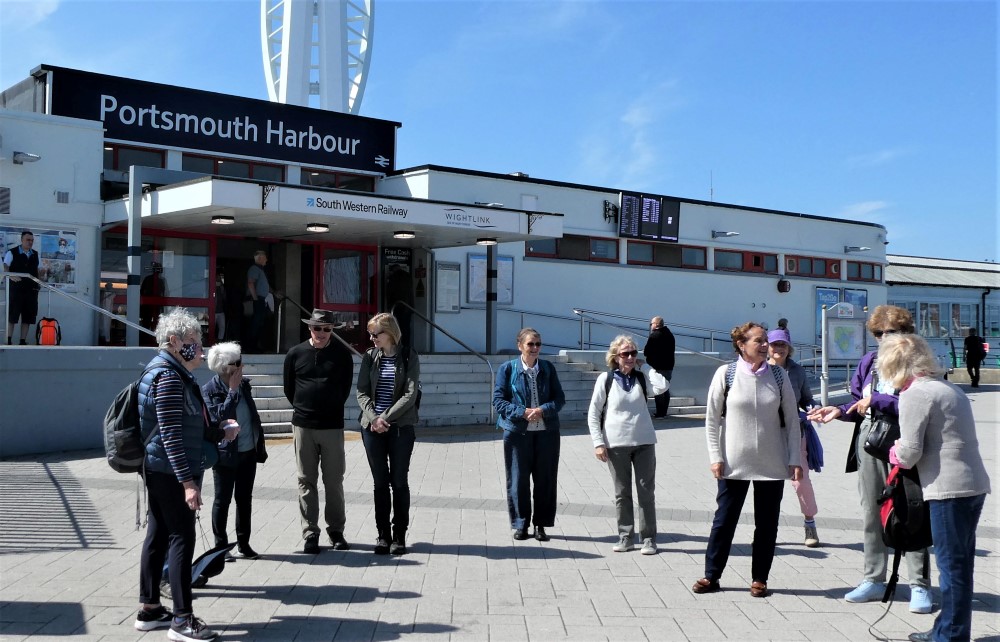
We made it!

An amazing story.
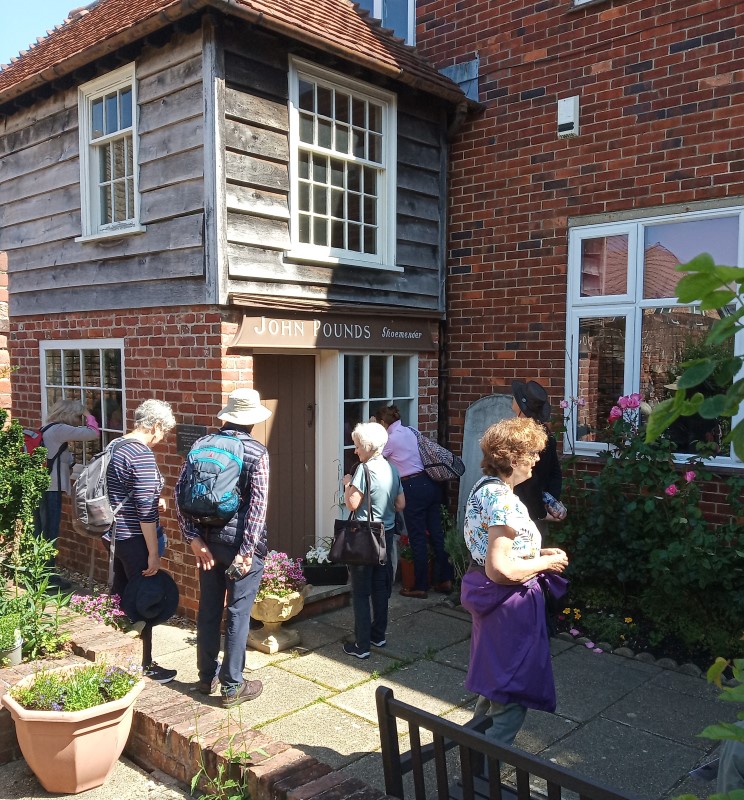
Rebuilt shop of John Pounds

Peep inside the shop/school.
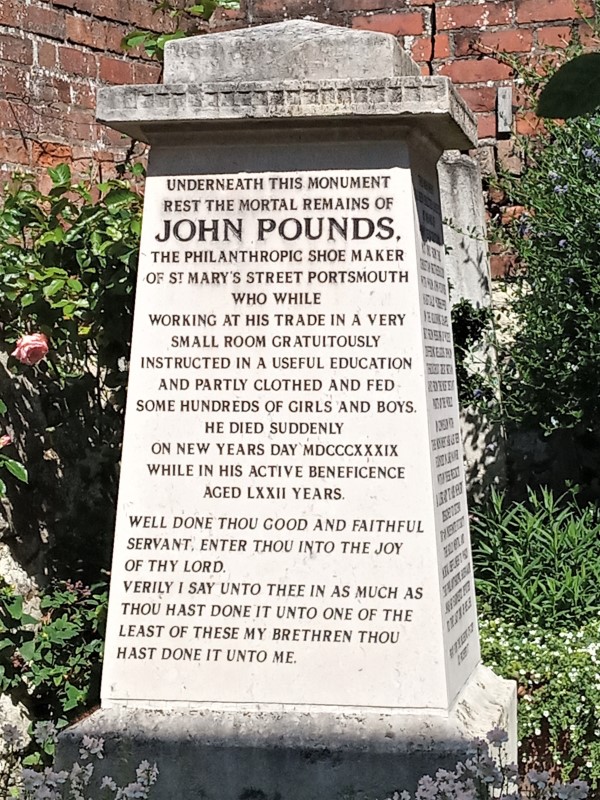
John Pounds won the "Man of the Millennium Award" from a local paper, ahead of other contenders including Charles Dickens and Lord Nelson.
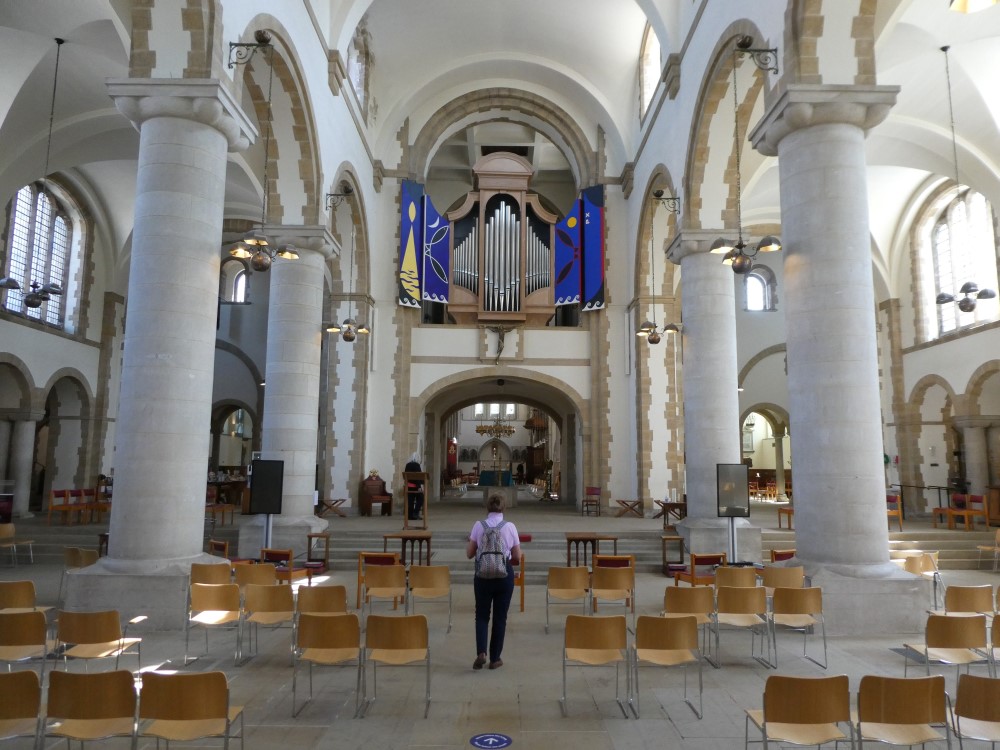
The nave in Portsmouth Cathedral.

The Royal Garrison Church left roofless as a memorial to the 930 civilians who died during the Portsmouth Blitz.
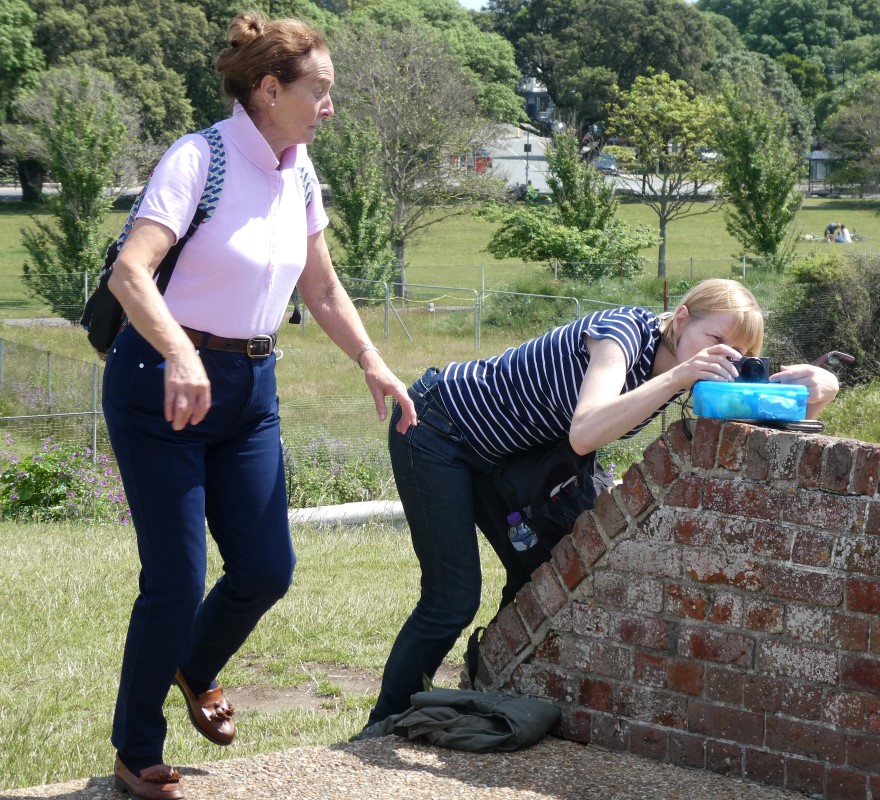
Setting up for a group photo is never easy.

But It must be worth it!

Nelson left Portsmouth in HMS Victory on his last voyage in September 1805 and was fatally wounded on 21st October 1805.
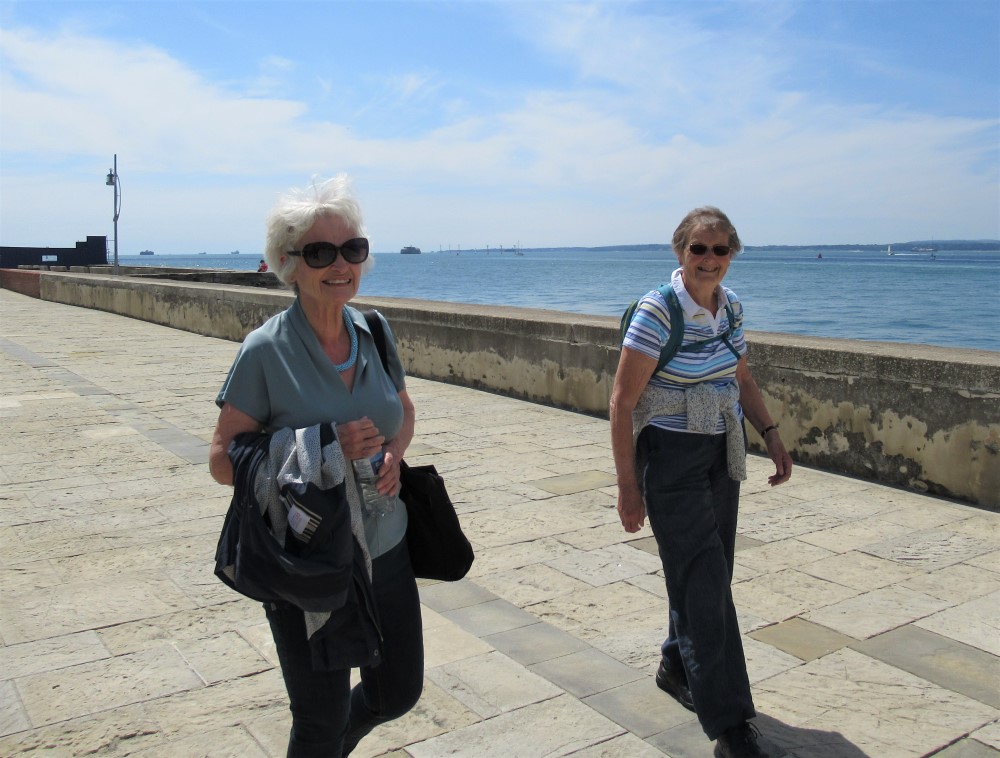
Just strolling in the sunshine.

Ah, coffee at last.
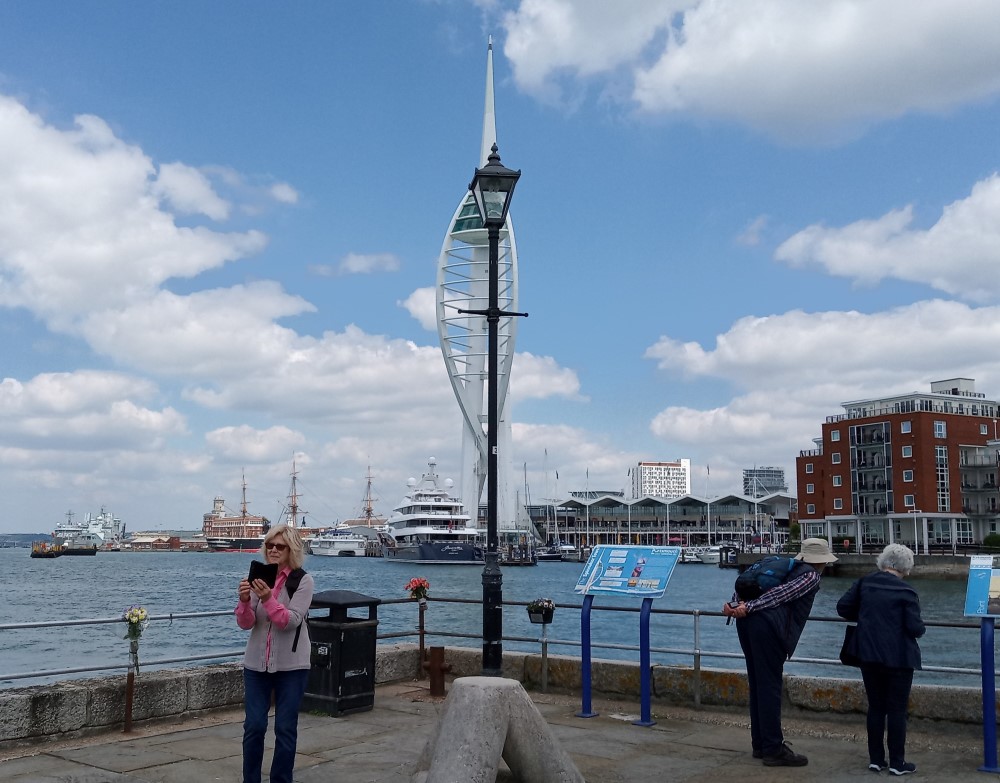
View of the Spinnaker Tower from Spice Island. Spice Island, not named after cargos on ships but from being a very seedy area known for it's "spice of life"
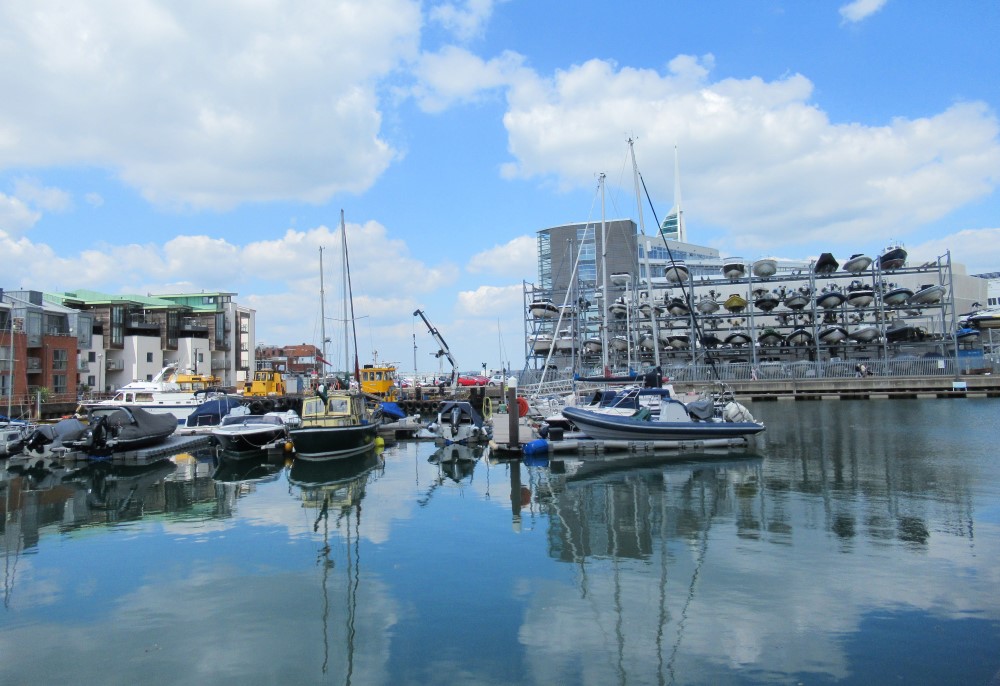
Fish Harbour, still in use for unloading and selling fish.
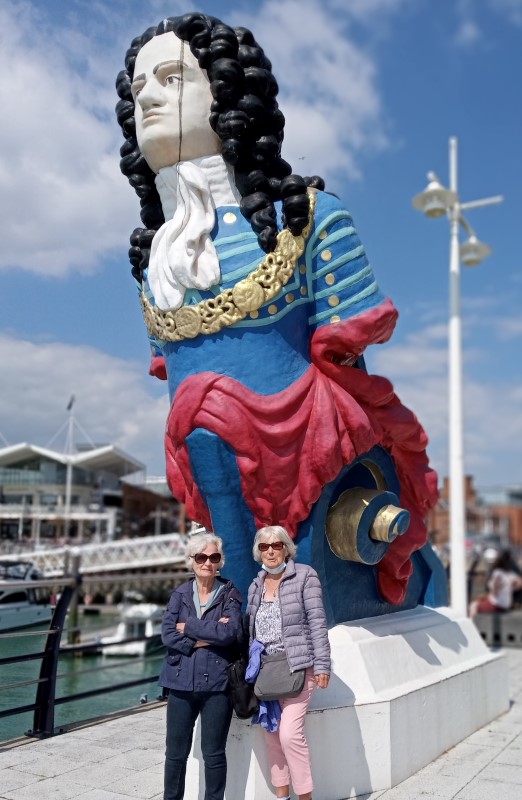
Some figureheads are bigger than others.
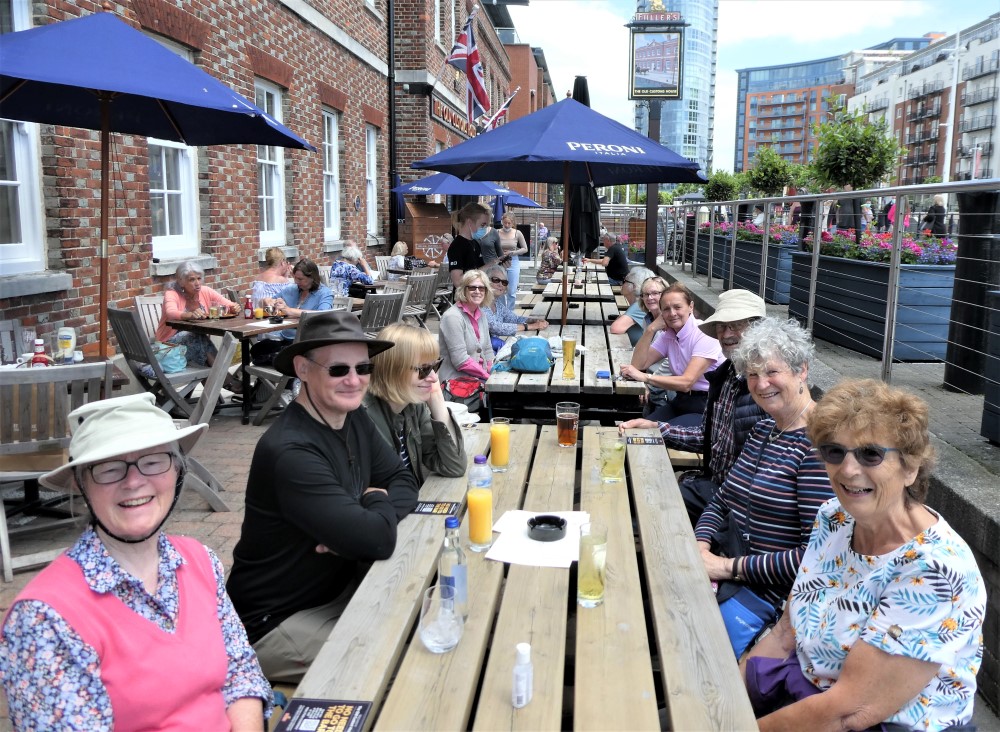
Lunchtime at The Old Customs House.
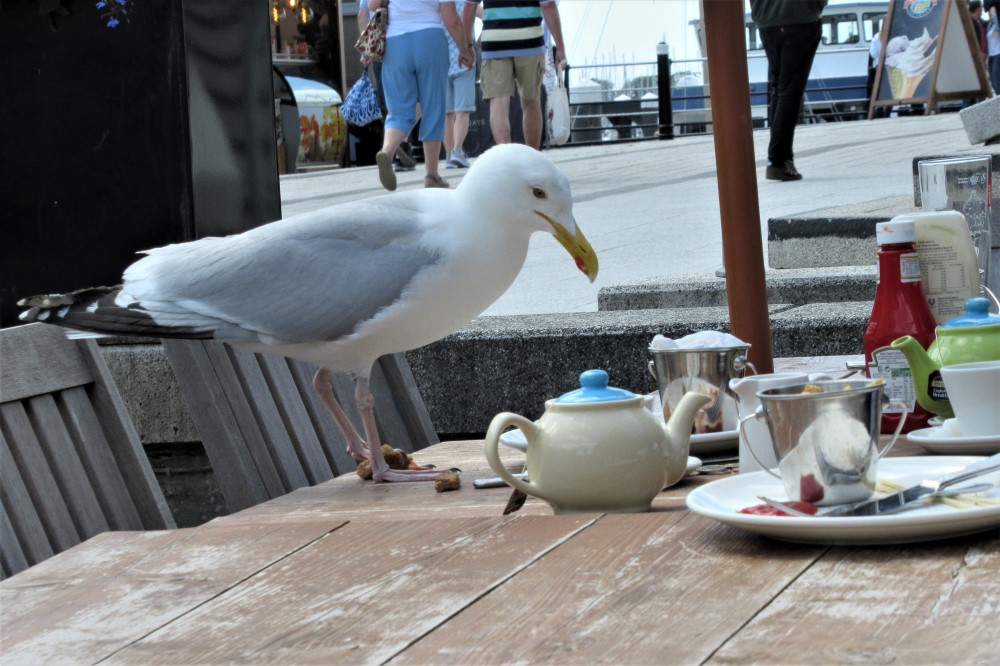
Where's my chips?
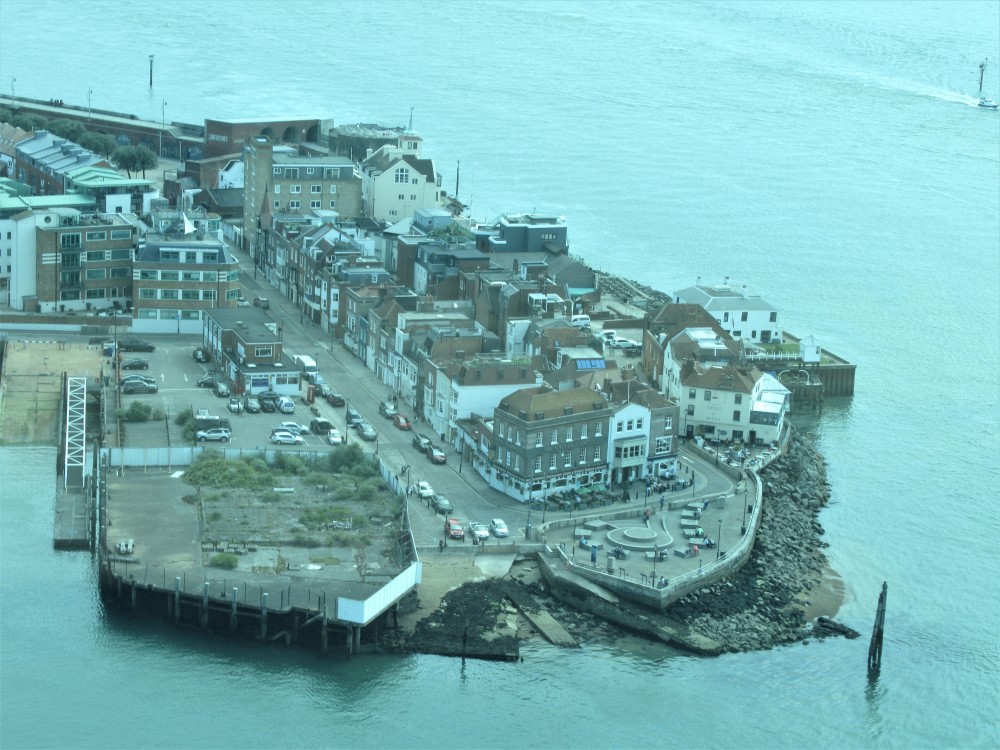
Spice Island from the Spinnaker
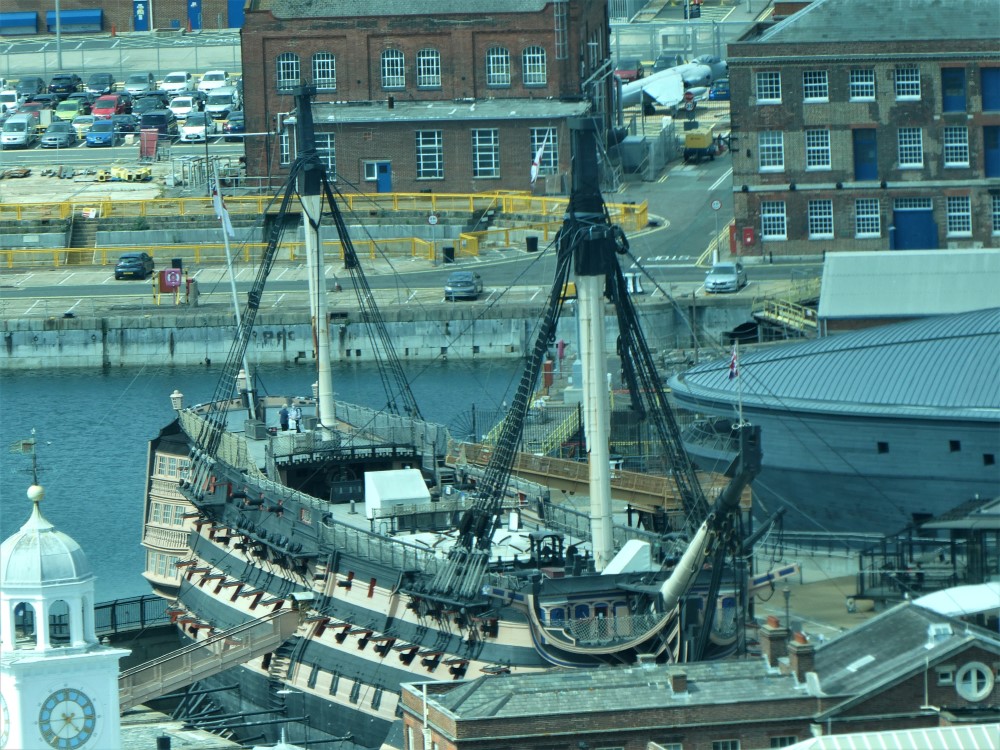
HMS Victory with one mast missing. All are being removed, repaired and replaced this summer.
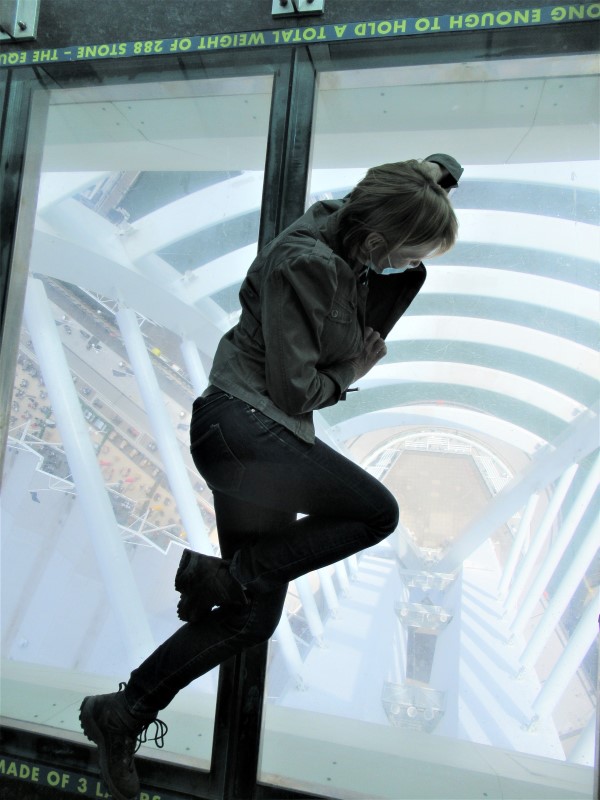
The glass is apparently strong enough to support 2 black rhinos - luckily they weren't there on the day of our visit.
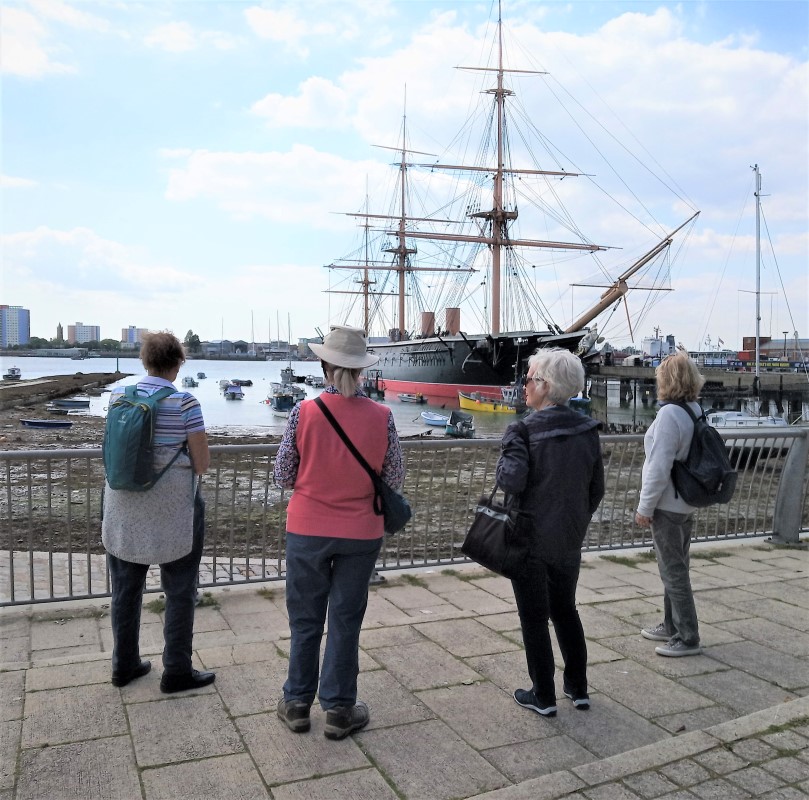
HMS Warrior, the first armour-plated, iron clad ship of the Royal Navy. Launched in 1861 but redundant and decommissioned in 1883. Never saw any action, apart from colliding with other Royal Navy ships.

So what's so interesting?

Warning notices are needed for some people.
Bubble walk on 16th June 2021
Walk leader Janet had organized a great car parking spot at the Sky Park Farm, before taking us on a 5 mile ramble. From the Sky Park Farm we headed along the route of the old Midhurst to Petersfield railway line before turning south so that we could circle the West Heath Common sand pit. Passing through the outer fields of the deer park we headed through fields of broad beans before crossing the Rother and turning towards Durford Abbey, taking the opportunity to shelter under an old oak on the way. Durleighmarsh Farm Shop was very busy so we decided to have our coffee further up the Sussex Border Path. From there we cut back down to Wenham Manor Farm and on to the remains of the railway bridge at Oldcroft before retracing our steps back to the Sky Park Farm. Not only had Janet organized the car park and the walk, we also had access to the Sky Farm picnic area to round off a lovely walk on a hot day. Information about Sky Park Farm is here:- Sky Farm
.jpg)
Ready to go.
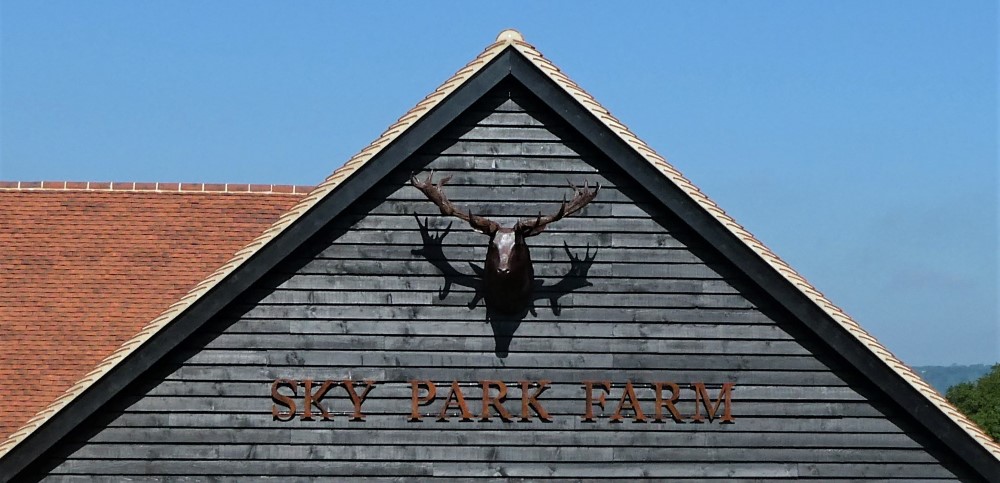
Our hosts for the day.
.jpg)
Sand excavation on West Heath Common
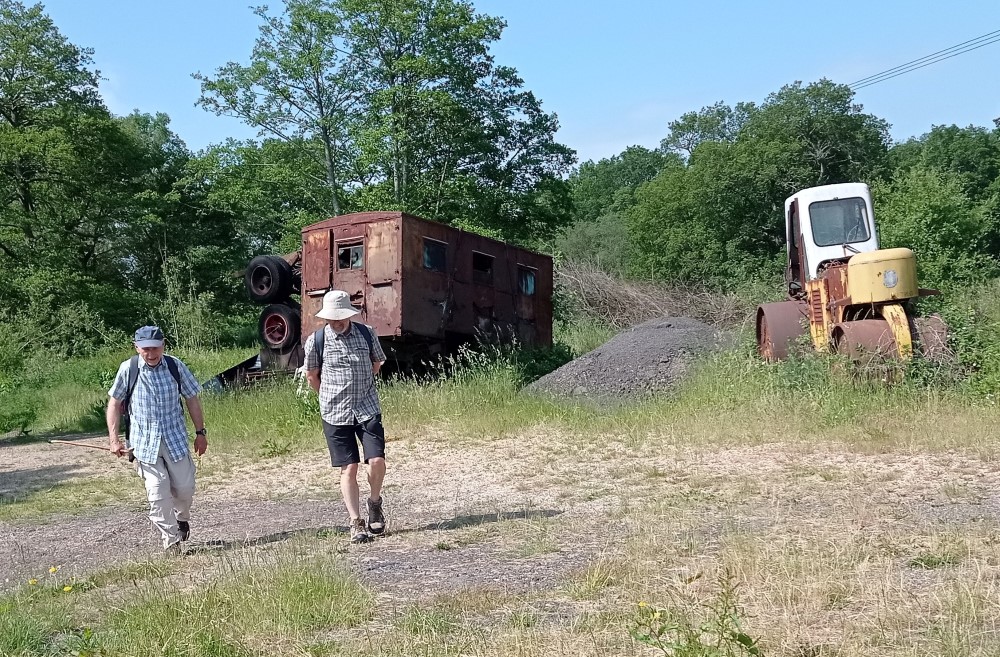
Couple of old wrecks, maybe a little past their prime.
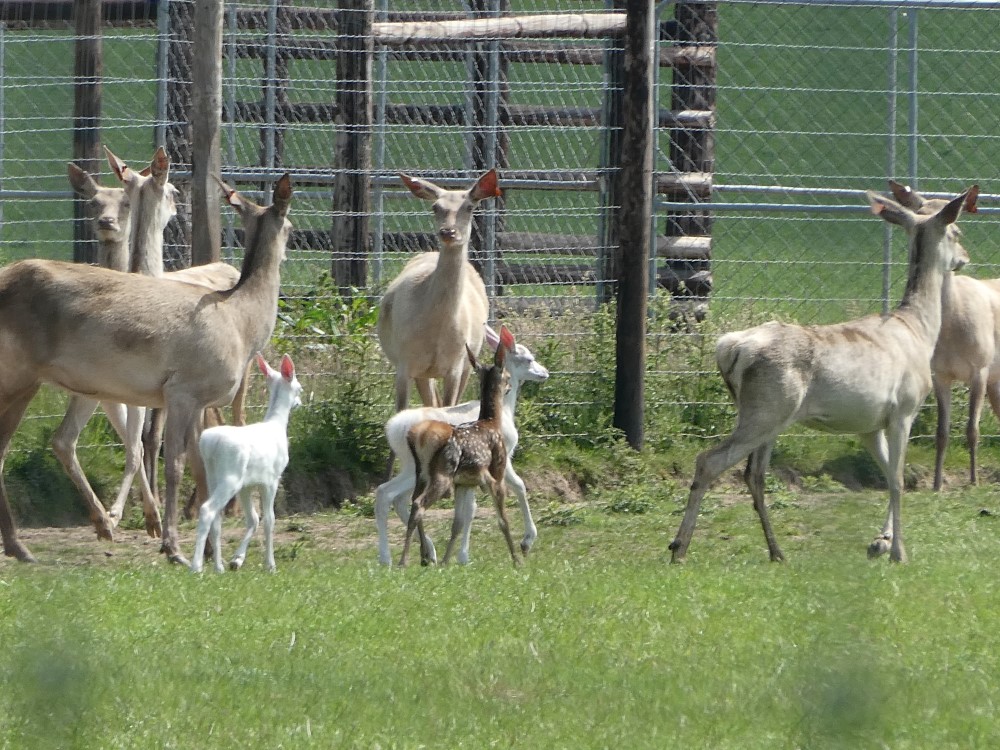
These are a variety of red deer which are white. The red fawn is a genetic throwback, not evidence that the fences were too low!
.jpg)
Broad beans, not quite ready for munching.
.jpg)
The Rother bridge, looking at the Common water crowfoot - and what are those beautiful blue things?
.jpg)
Damselflies, this one's a male Banded Demoiselle. Common throughout Europe and Asia, perhaps not surprising as the female can lay eggs at 10 per minute for 45 minutes.
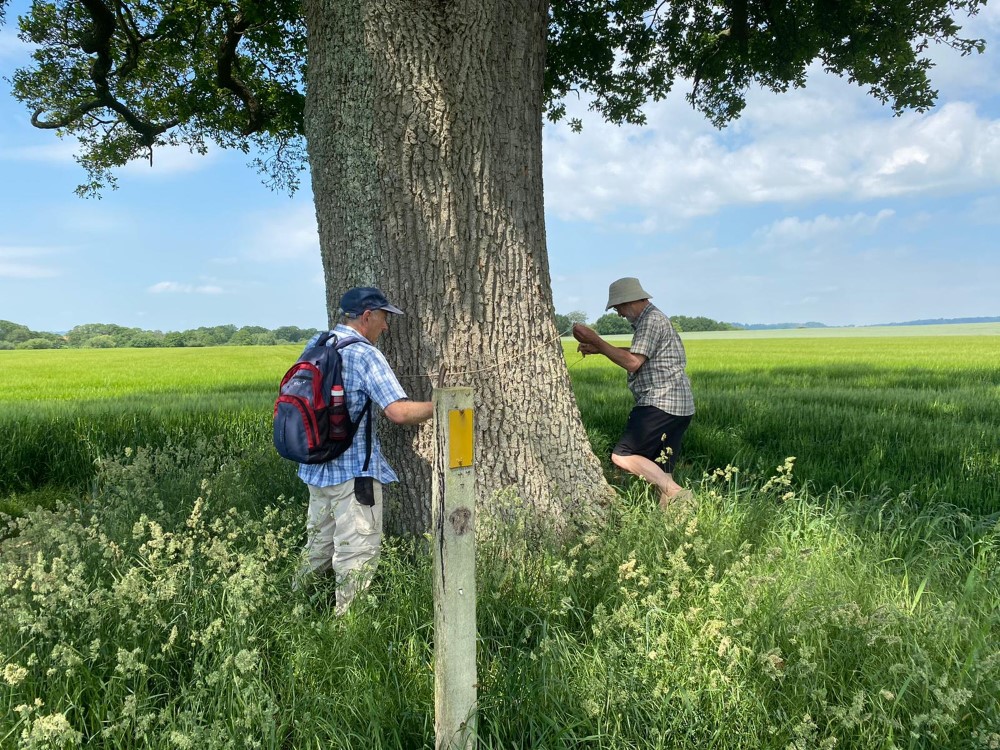
Shady oak on the path to Durford Abbey. Measured and dated, it was possibly just an acorn a year or so after the Battle of Waterloo in 1815.
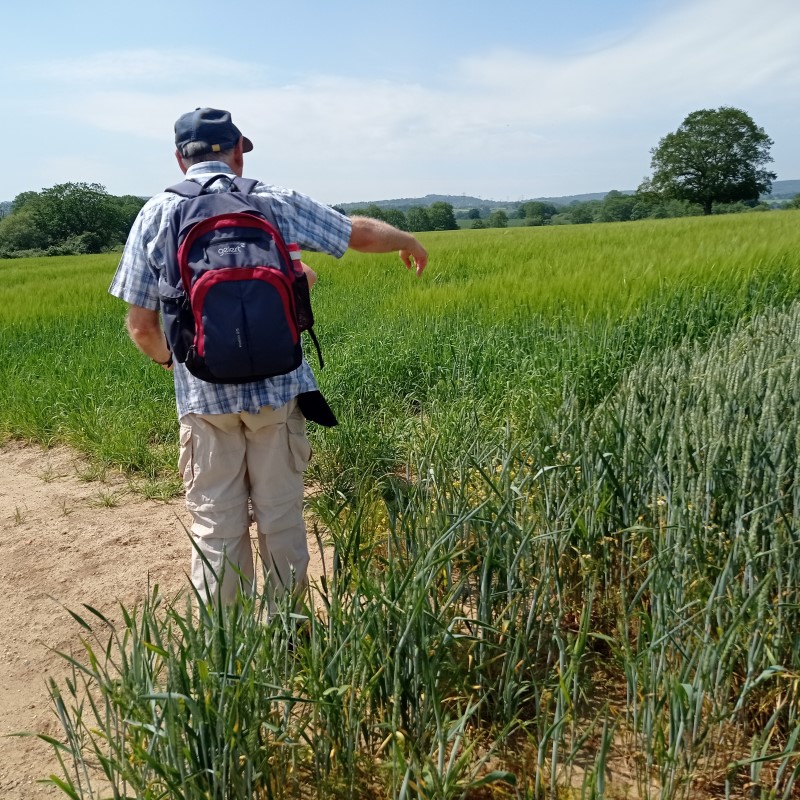
Miguel showing us the dividing line between wheat and barley.

Aha - there's the dividing line.
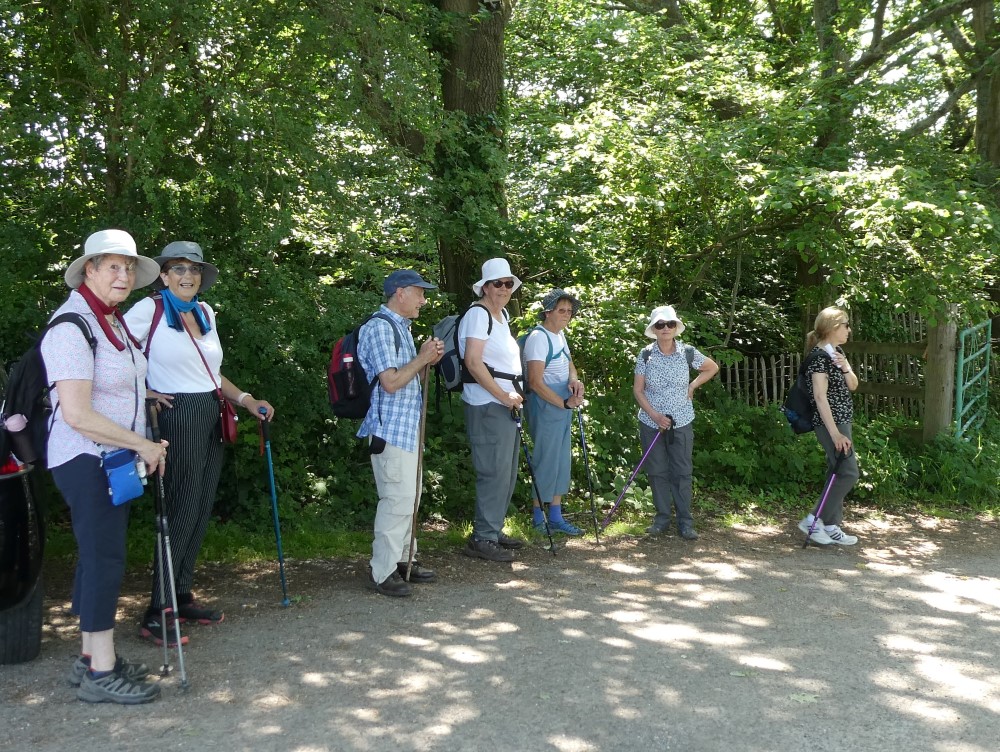
Sheltering at Durleighmarsh.
.jpg)
Heading away from Wenham Manor Farm
.jpg)
Group photo
.jpg)
The deer needed a bit of shade as well as us!
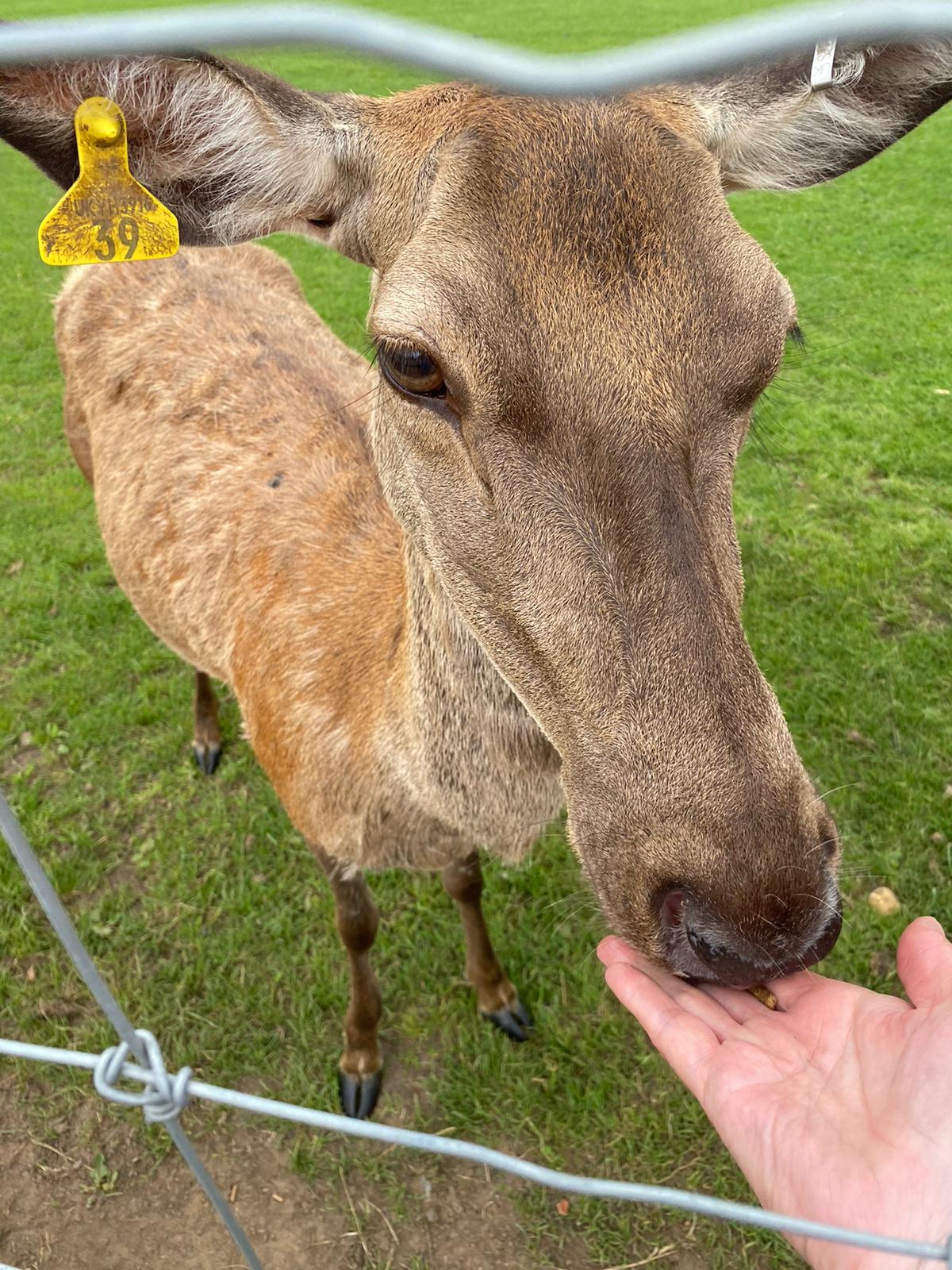
Feeding time.
.jpg)
Welcome picnic spot, thank you!
.png)
About 5 miles.
Bubble walks on 9th June 2021
Jean led a very pretty walk from the Memorial bridge in Liphook, last walked in winter, now with Azalea, Rhododendron and many wild flowers out it looked so different, besides we went the opposite way round! From the Canadian war graves in Bramshott churchyard, through Conford Park Farm, the lovely village of Conford where fresh eggs were bought and the a coffee break taken by the village hall once the village school, making our way to Passfield Manor, Cooper’s Bridge and back to St Mary’s Church, after walking around five miles we ended with a nice picnic lunch shaded from the sun in Radford Park at Liphook.
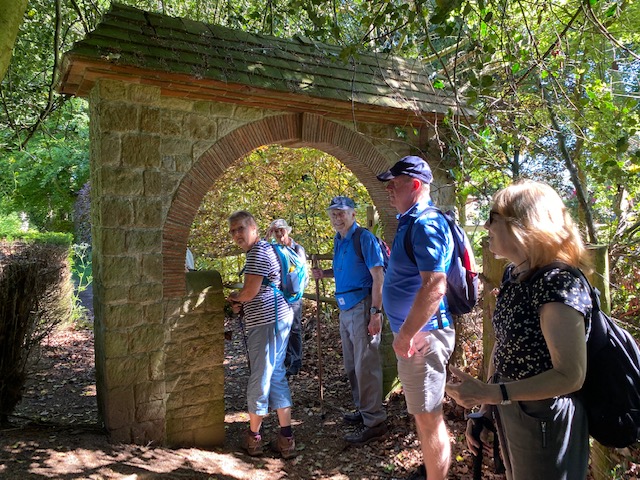
The entrance arch into St Mary’s churchyard
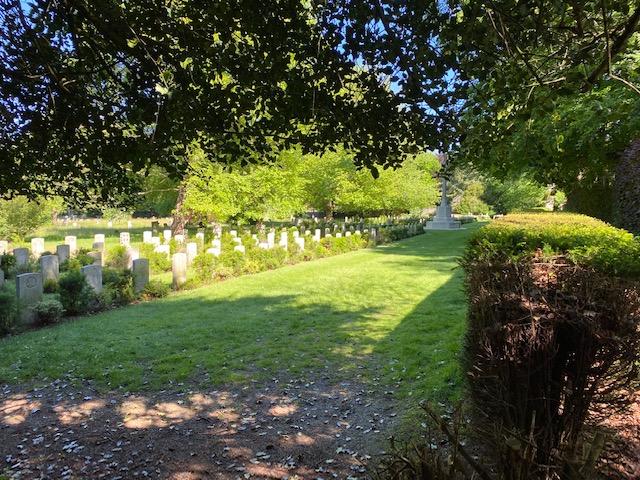
Graves of 300 Canadian Soldiers who died in Bramshott during the 1918 flu epidemic
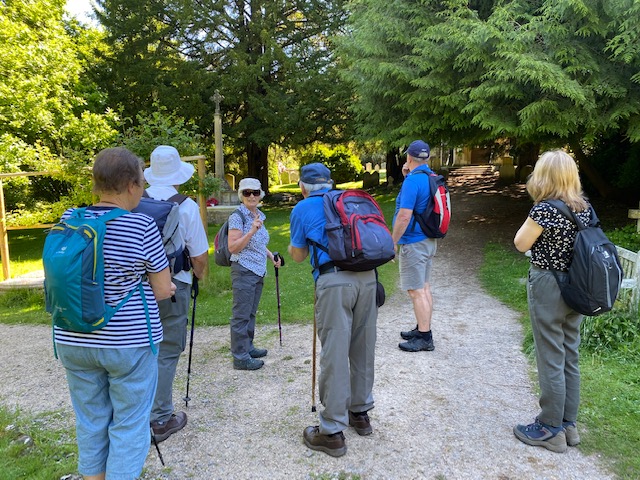
Jean telling an interesting story about Bramshott Church
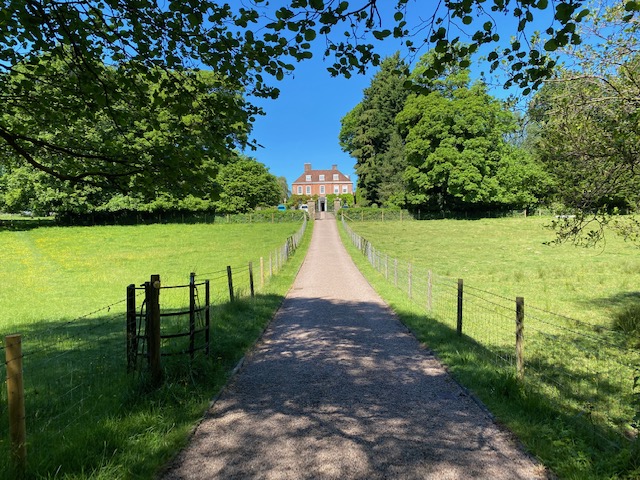
Bramshott Vale House
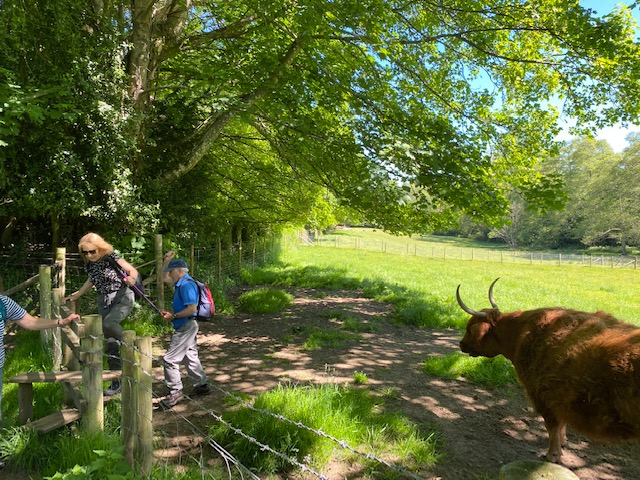
Highland cattle on duty at the stile
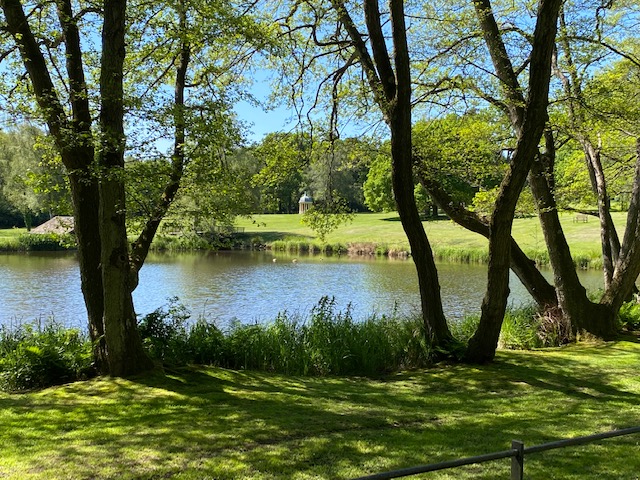
Conford Park Lake

Conford Park Farm
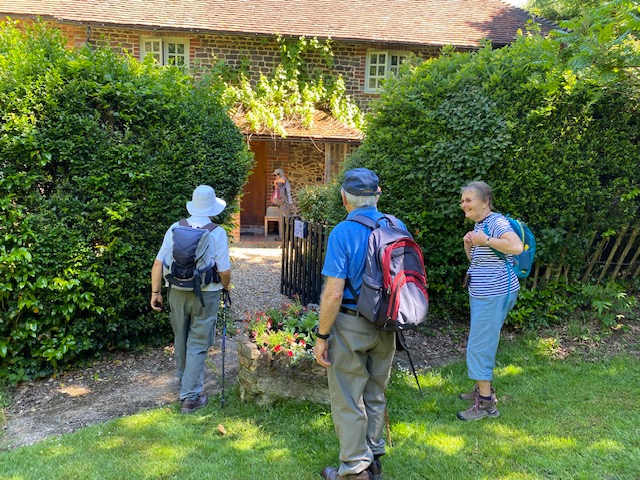
Shall we buy some eggs?
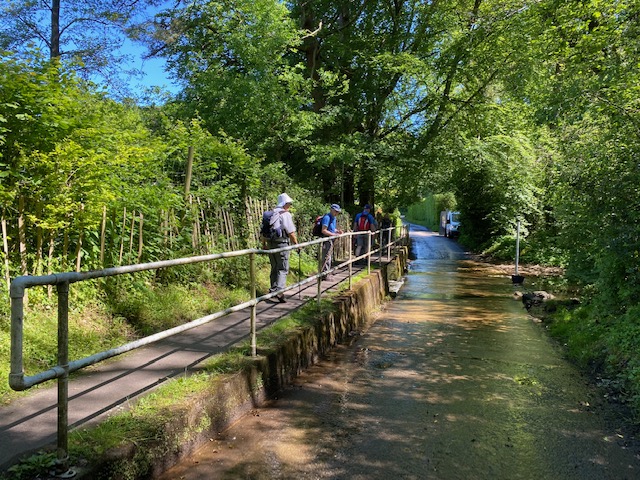
Conford ford
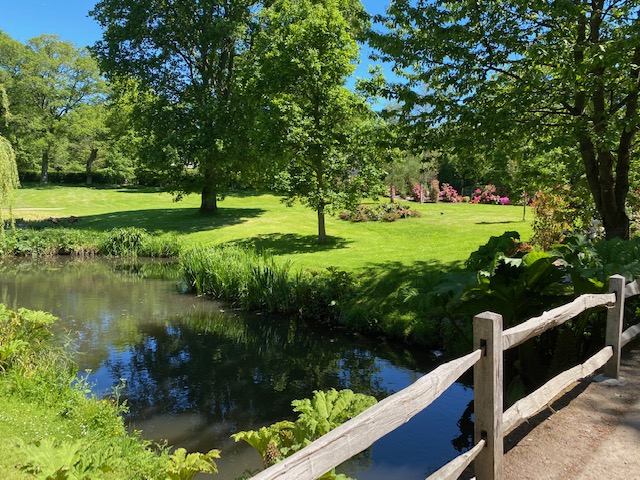
Passfield Manor gardens
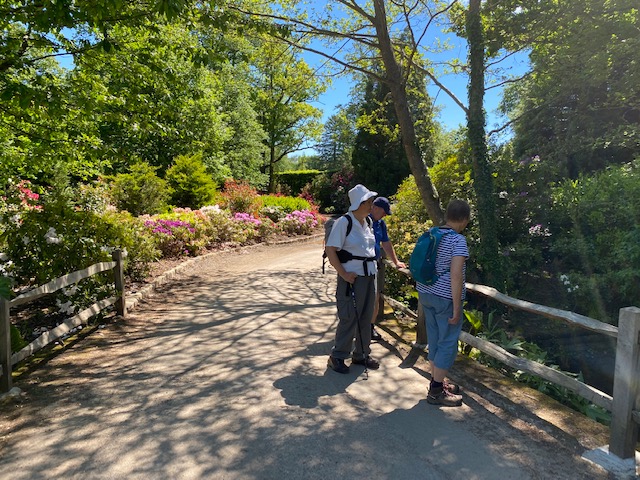
Duck spotting
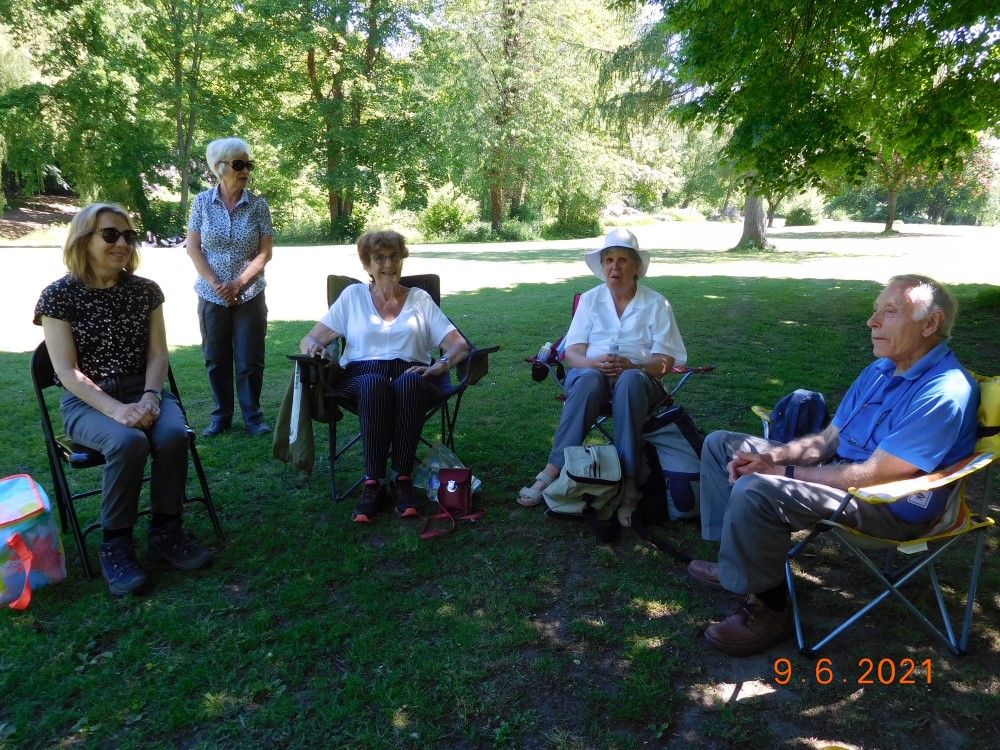
Picnic to end the walk
_____________________________________________________________________________________
_____________________________________________________________________________________
_____________________________________________________________________________________
The Selborne walk was probably 2 or 3 weeks early. We started out from the car park behind the Selborne Arms but some of the magnificent displays of orchids on Noar Hill were still in the ground! However there was still plenty to see, including the Well Head Stream, originally moved to its new position in memory of Gilbert White. The ram pump, hidden behind the door provided water to the village up until 1934. See Ram Pump for more information. Up on Noar Hill we only managed to find a few orchids but other wild flowers were in abundance. After a tea break in the shade, we tackled the Selborne Hill, walked along the top to reach the Wishing Stone at the top of the Zig Zag path, before a final descent back to Selborne village.
.jpg)
Checking out the ram pump.

Heading for Noar Hill, a chalk quarry in medieval times, now a Site of Special Scientific Interest
.jpg)
So, very pretty wild flowers, but is there something else?
.jpg)
Thanks to a telephoto lens, we can now see the reason for the interest.
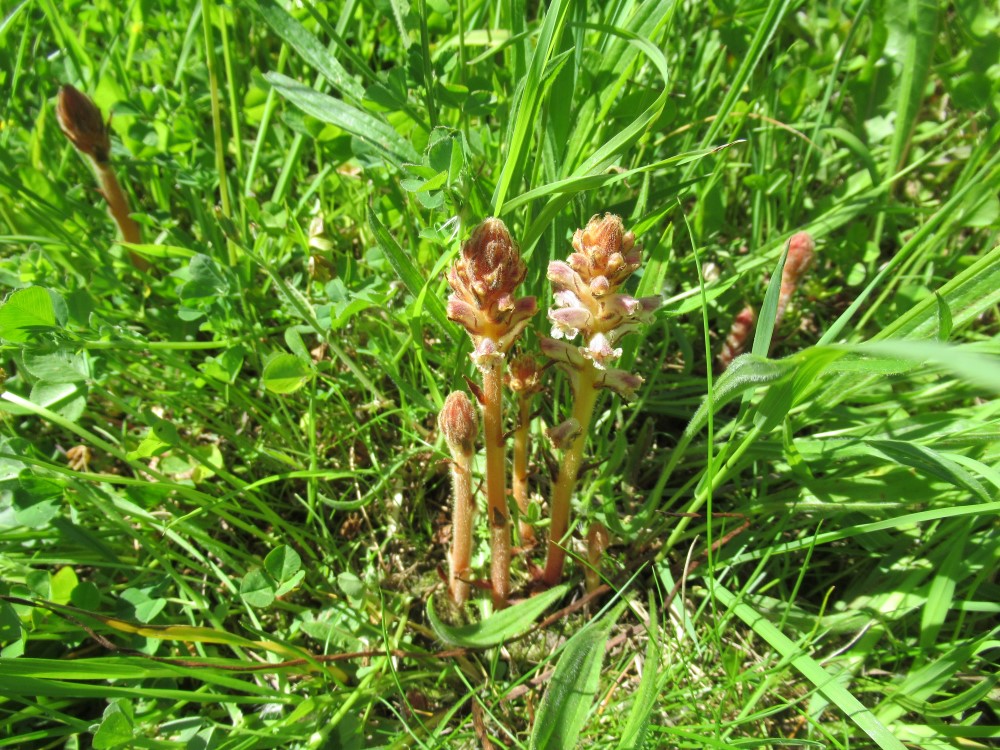
Broomrape, a parasitic plant taking it's nutrients from other plants, often clover
.jpg)
Common Twayblade, not an easy orchid to spot with its green/yellow flowers
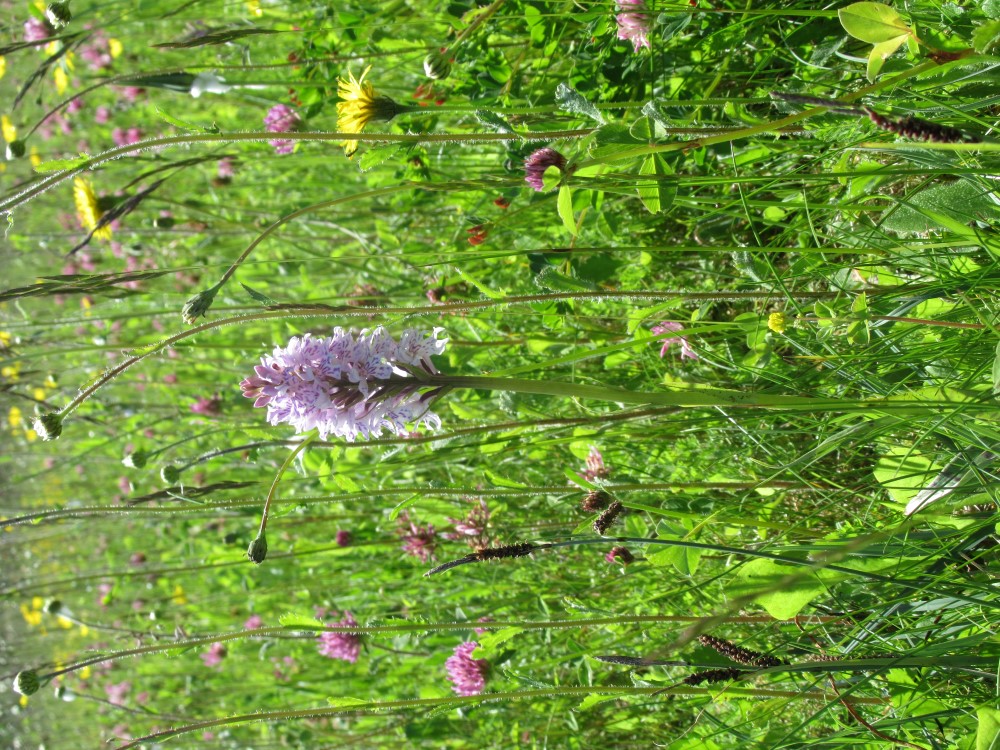
Common spotted orchid.
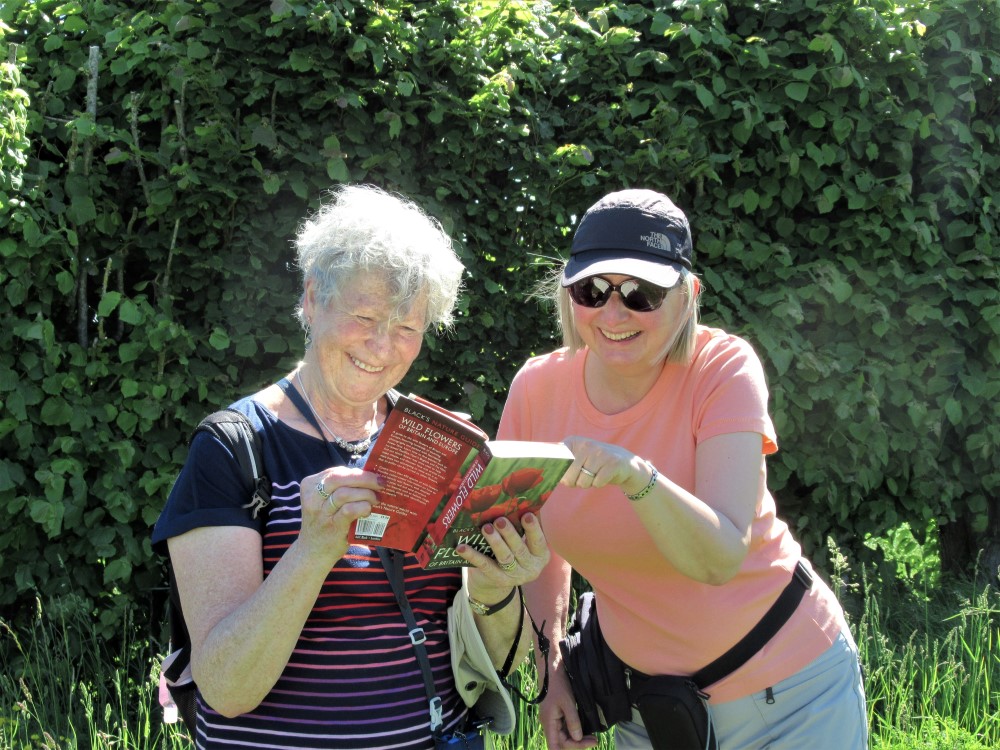
Always worth having a flower book on Noar Hill.
.jpg)
Heading down Noar Hill.
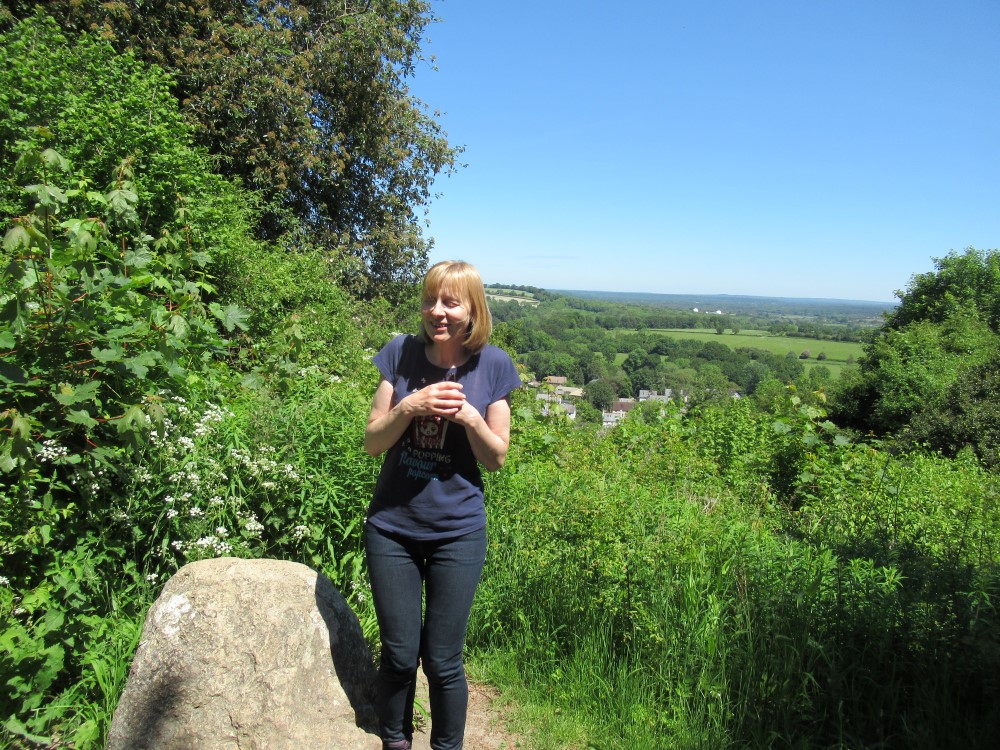
Some people believe that a wish will come true if you walk around this stone backwards three times, with your eyes shut. Stone placed here by Gilbert White.
.jpg)
View over Selborne, The golf balls are for the operation and management of the UK Military Satellite Communications System, and is home to half of the 1001 Signals Unit, which provides voice, telegraph, facsimile, data and imagery services to military users, as well as supporting non-military government agencies.
.jpg)
Much better walking down than up!
.png)
Just over 4 miles
_____________________________________________________________________________________________
_____________________________________________________________________________________________
_____________________________________________________________________________________________
Peter had a small bubble walk in and around South Harting, starting at the church and going upwards from there to the top of Harting hill, stunning weather and stunning views all the way, and what goes up must come down. About 4 miles.
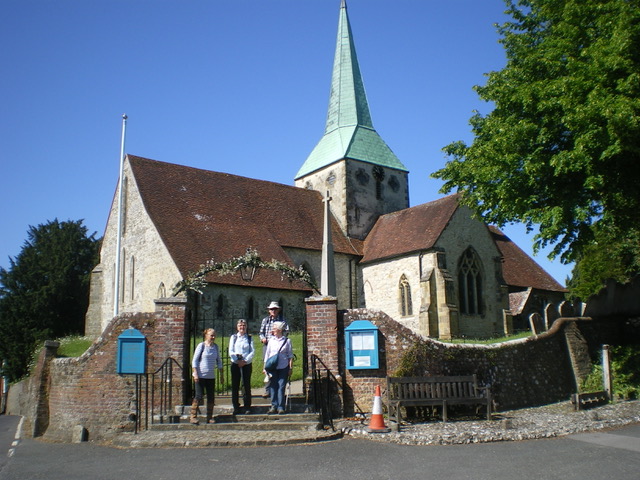
Starting from St Mary & St Gabriel Church South Harting

Good example of a Bracket Fungus?
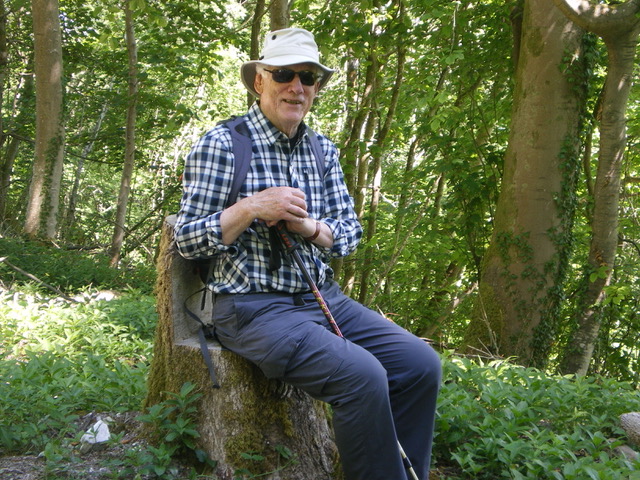
Our leader at rest
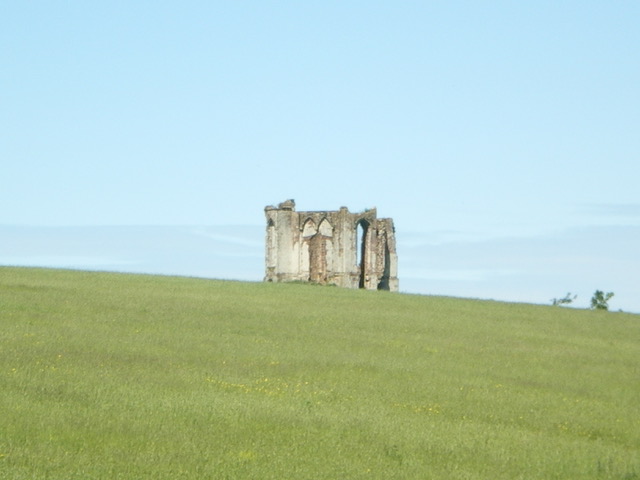
The Vandalian Tower, built in 1774 and destroyed by fire in 1842
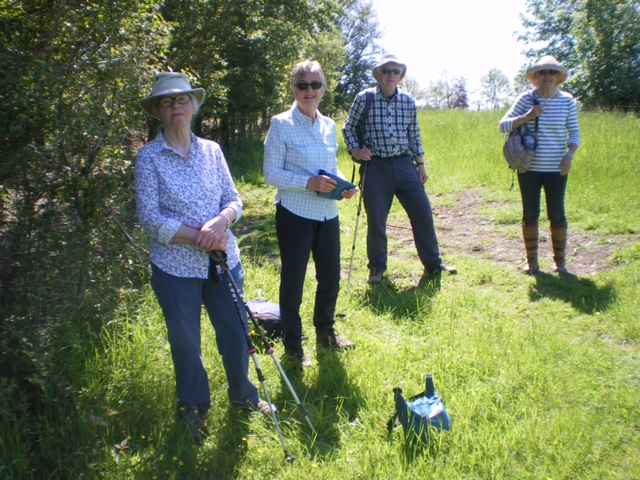
Drinks time
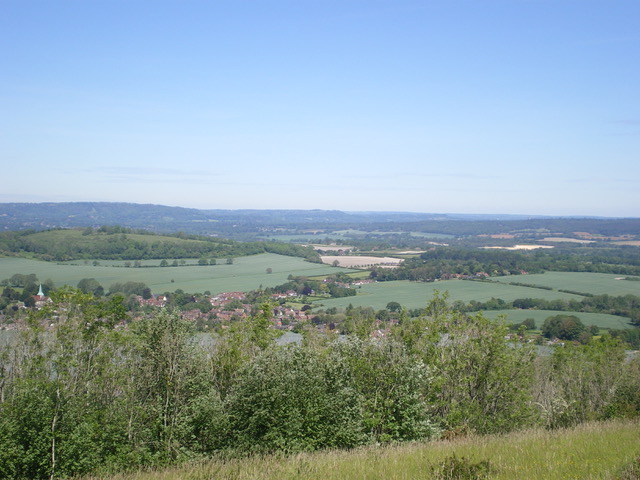
Stunning view over South Harting
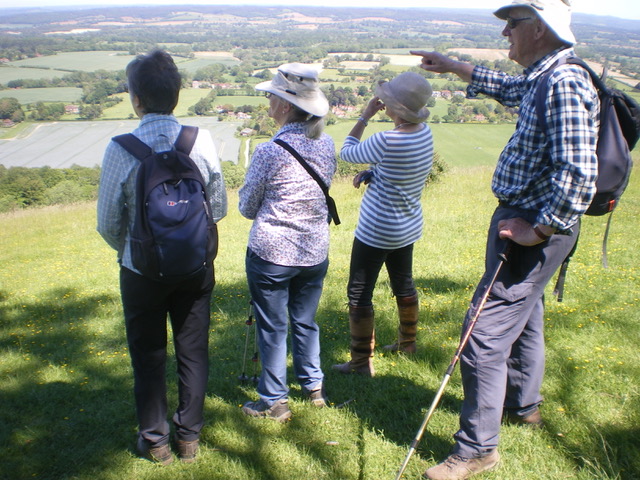
Just look at that amazing panorama!
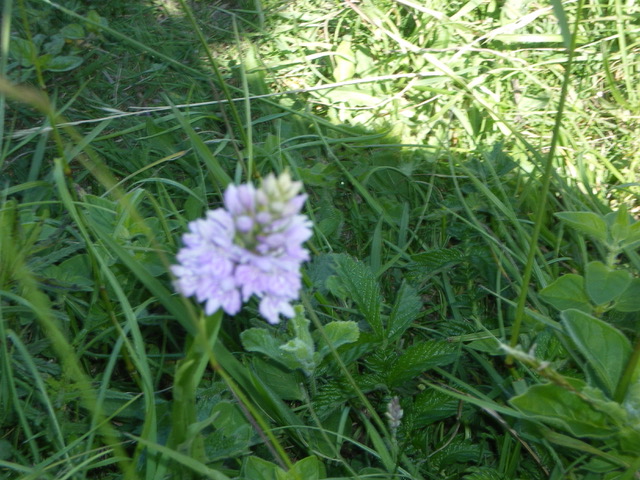
Early orchid on Harting Down
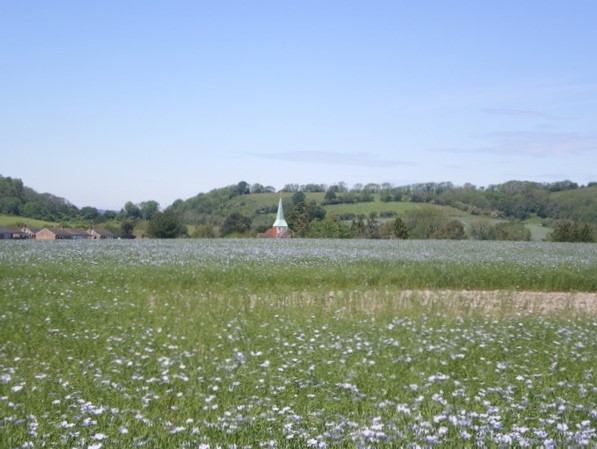
Looking across fields of Common Flax or Linseed
Bubble walks on 2nd June 2021
It was a hot morning as Celia led a walk from Elsted, the views at the cricket ground were spectacular with many more to come as we headed east to New House farm and then towards Didling. Passing through a number of sheep fields with the Ewe’s very protective of their young we stopped for a break enjoying more stunning views in all directions. A little climb, descent and climb again took us to Treyford. Hot, tired and happy after four and a half miles we were back in Elsted. There is a nice video here :- Didling Church
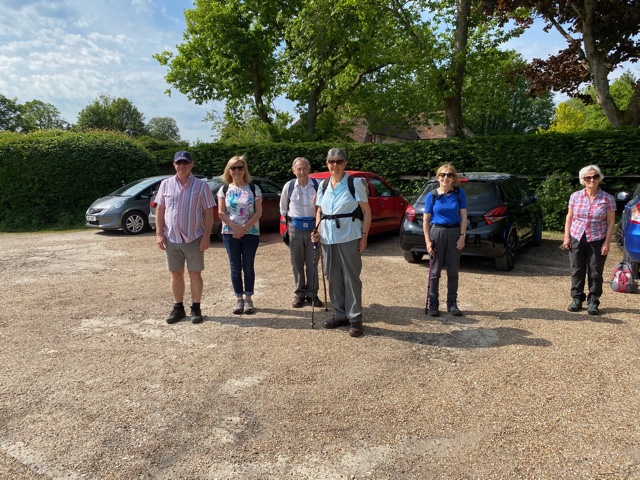
All ready to walk

Trying to find a little shade
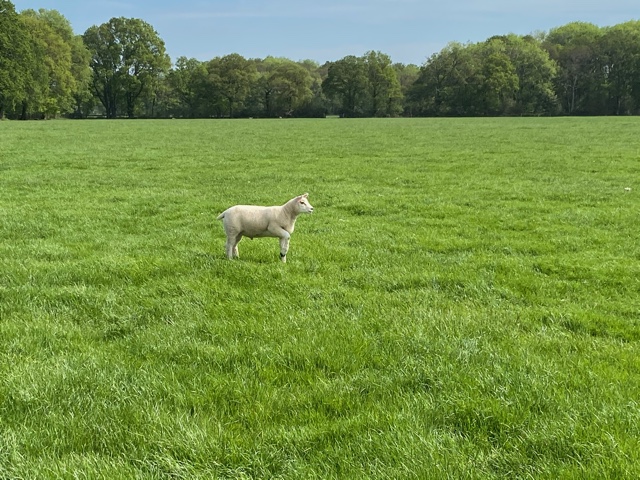
I've got a poorly leg and can't keep up
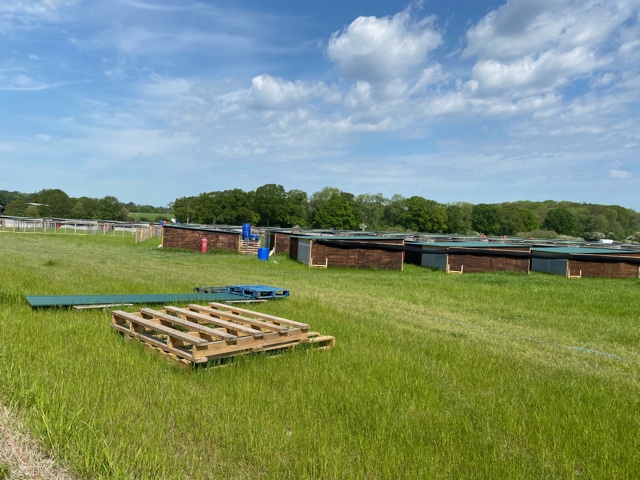
New homes for the arrival of chickens maybe?
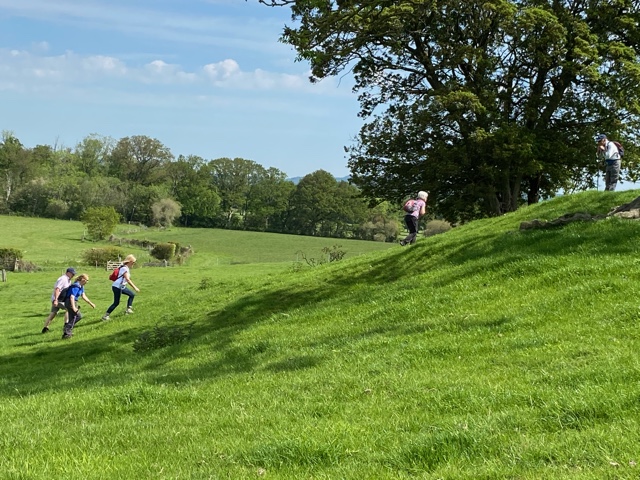
Cardio workout time.

Whichever way, there is a good view

13th Century Didling Church, known as the Shepherds Church, still without electric lighting it is lit entirely by candles.
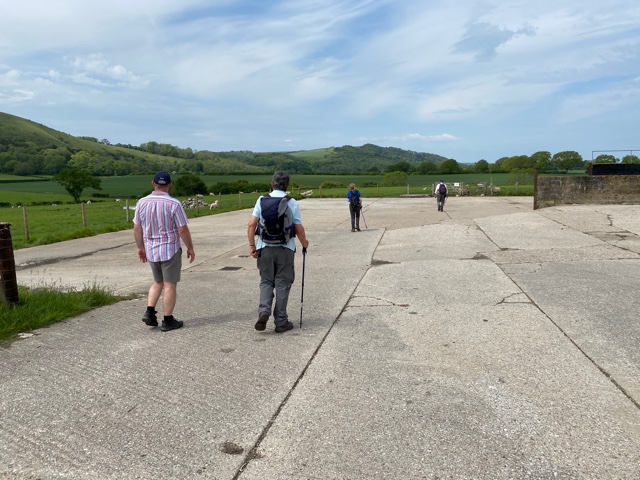
Celia looking after her flock

Ah, there they are!
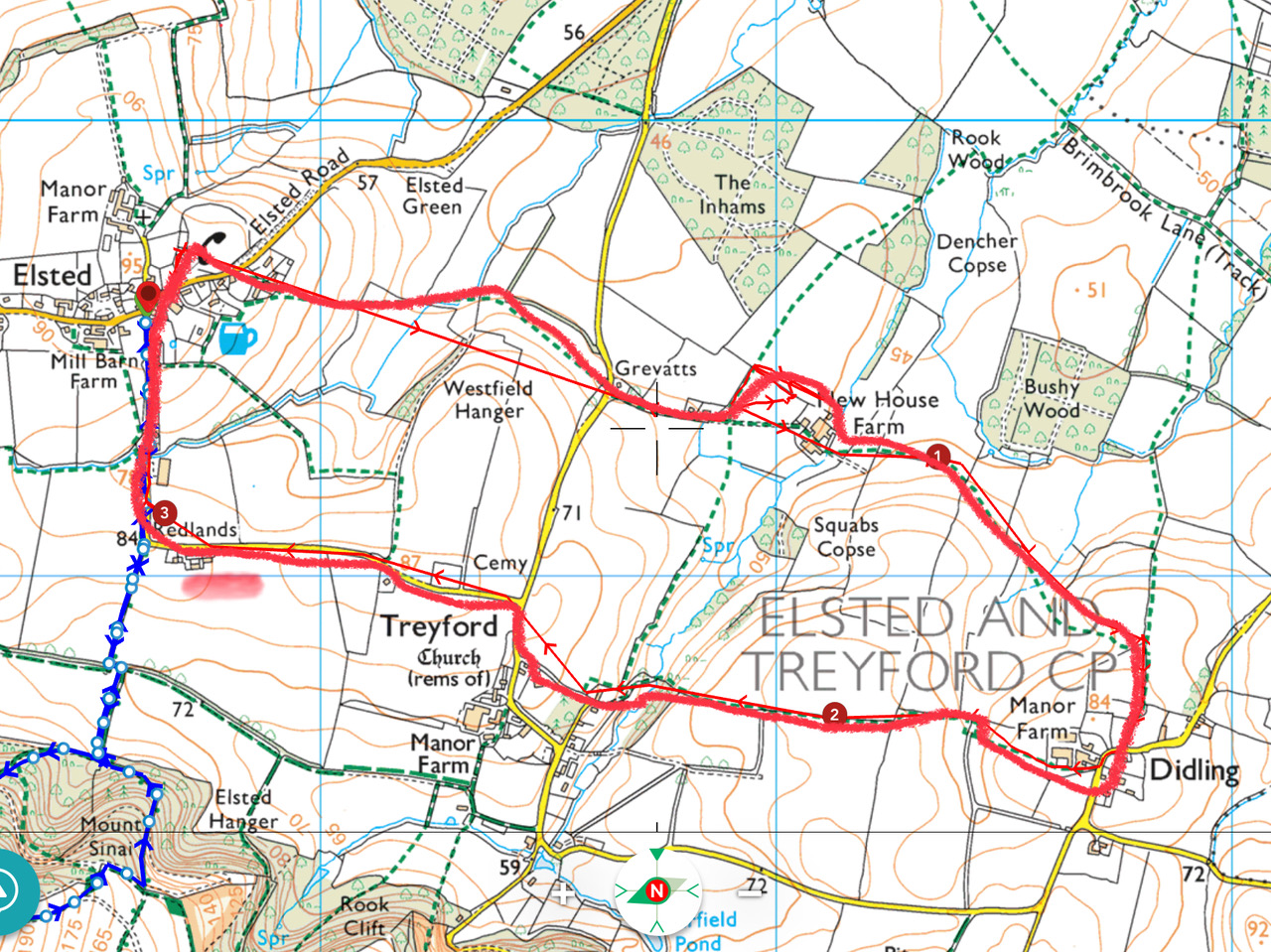
About 4.1/2 miles
____________________________________________________________________________________
____________________________________________________________________________________
____________________________________________________________________________________
Led by Denis, we all had a ramble, via the Monument, in the scenic areas around Uphill House before cutting back through the vineyards and then on towards Tillington village. From there to a short walk along the footpath next to the A272 before entering Petworth Park. Full of deer as usual and temperature unusually warm. We took the opportunity to examine a would be new member about the origin of the abundant "molehills" in the park which, we thought everybody knew, were created by yellow meadow ants. Failing to answer obscure questions did not however stop us welcoming Celina as a new walking club member. At the end of the walk we had a picnic near the playing fields in Tillington.

The monument in Petworth Park

In the shadow of the monument
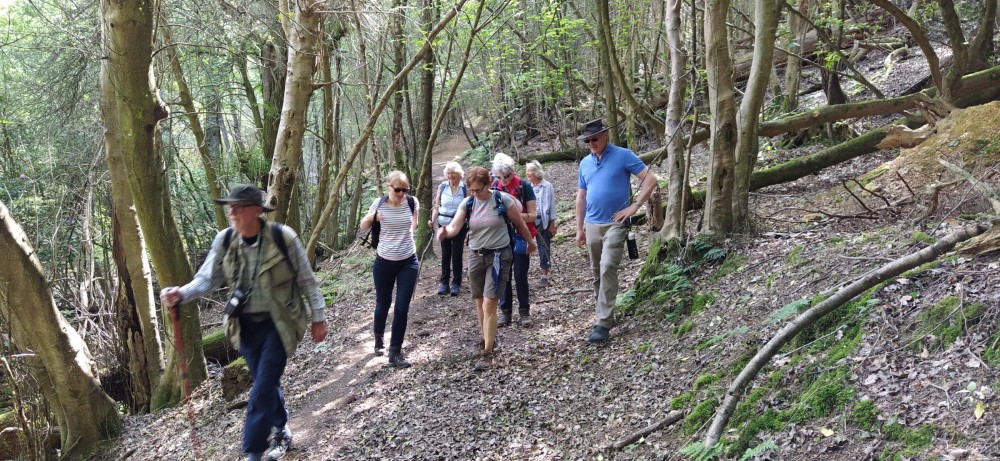
Upperton Common
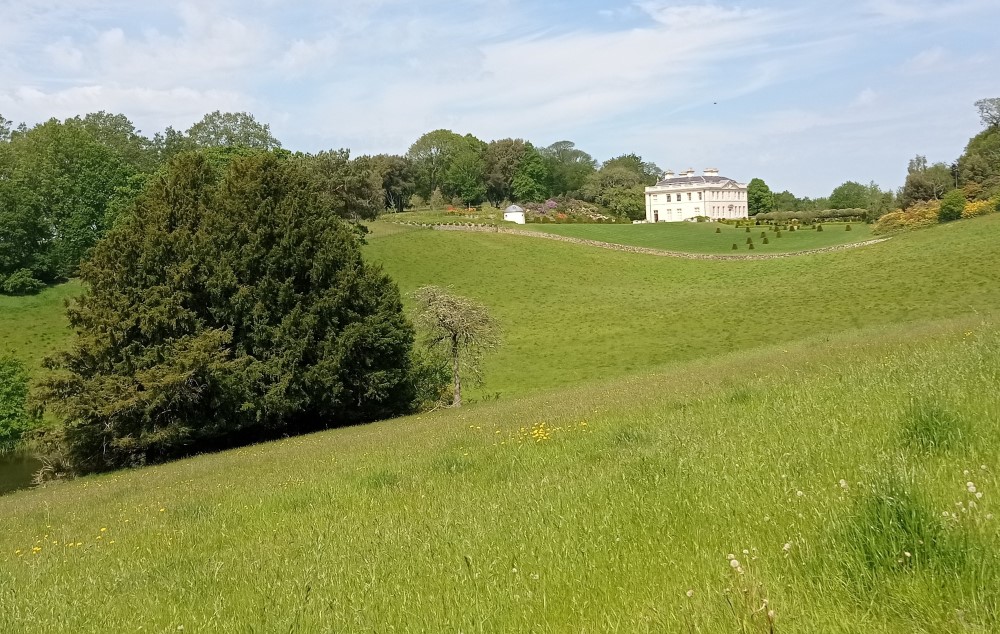
Pitshill House, restored for the Hon Michael Pearson, originally built in 1794.
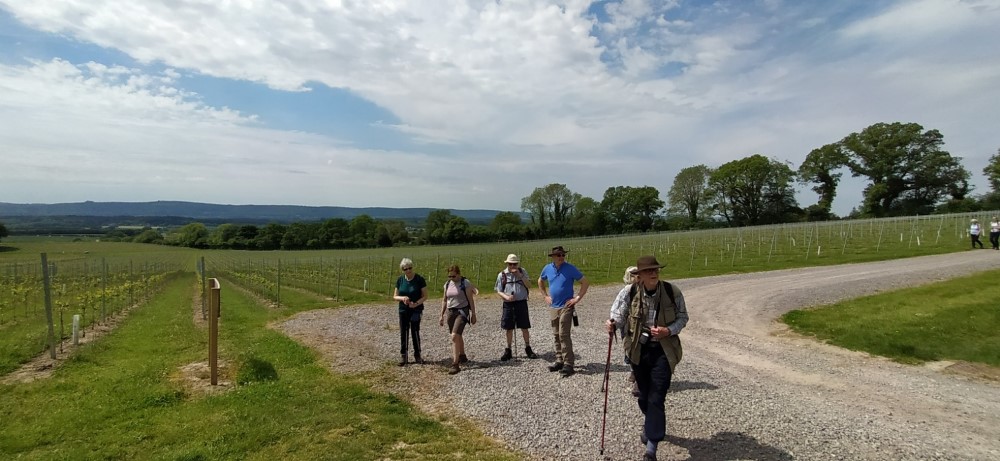
Strolling through the vineyards
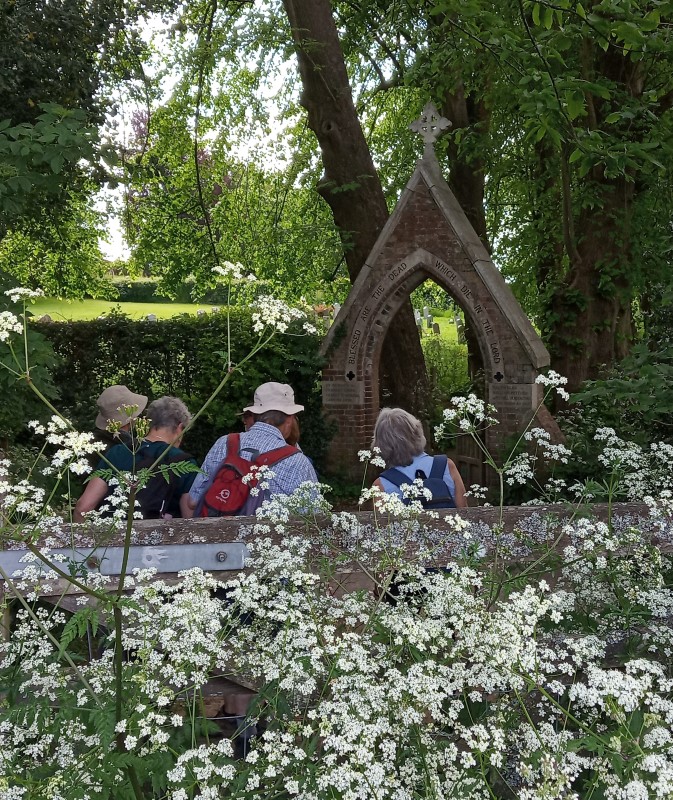
Entrance to Tillington graveyard

All Hallows Church with its very unusual Scots Crown spire, thought to have been suggested by the artist Turner and added onto the old tower in 1807.
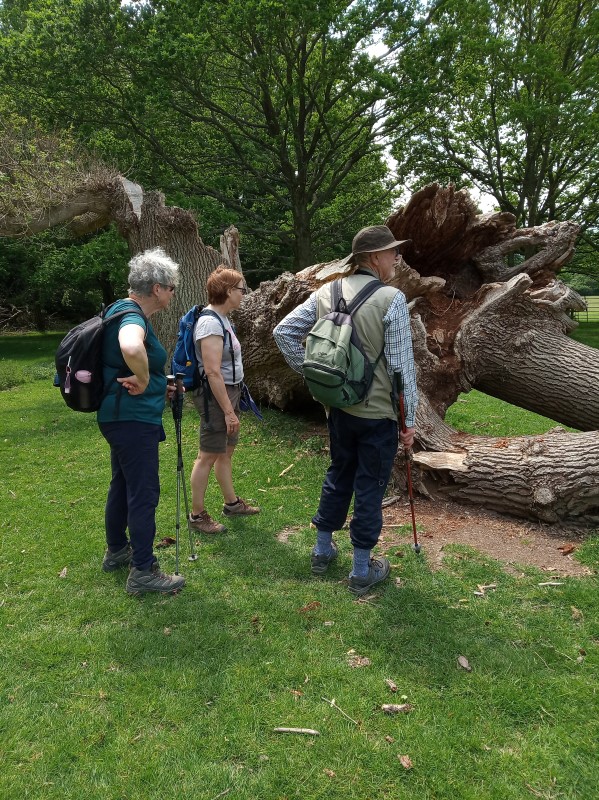
Checking out a fallen tree.
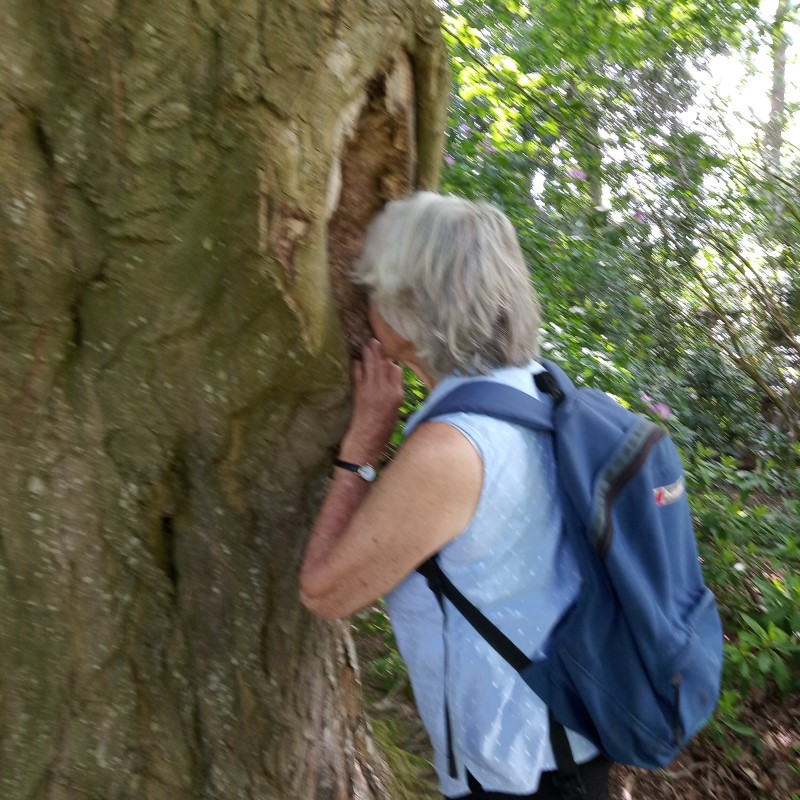
Hallo in there?
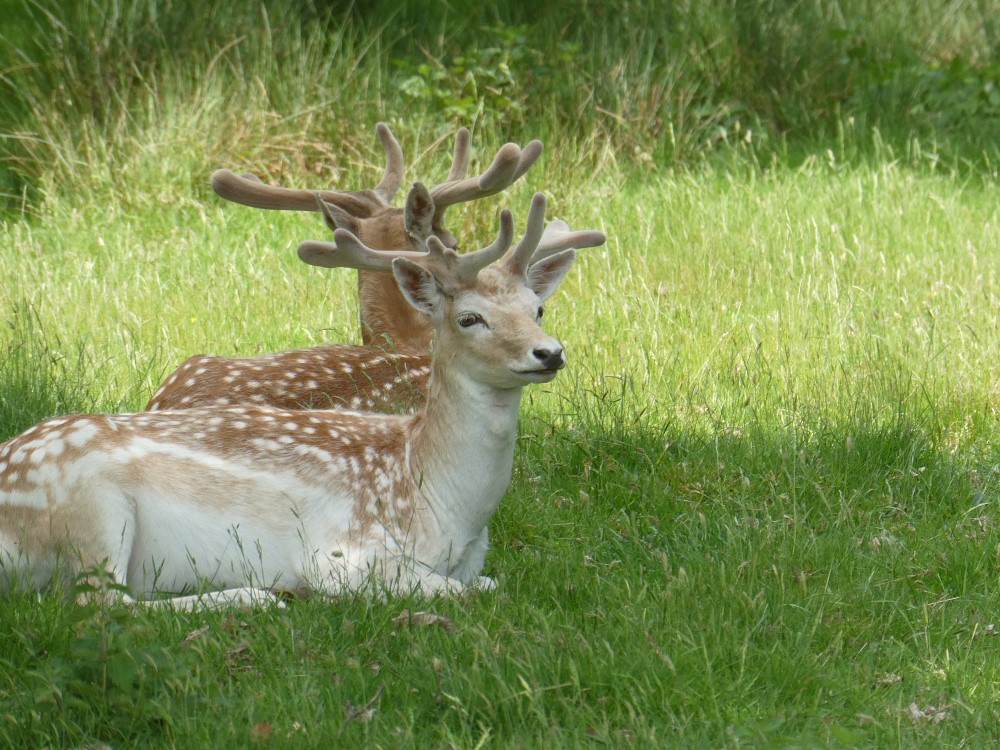
Hallo deer.
.png)
About 4.1/2 mile
__________________________________________________________________________________________
__________________________________________________________________________________________
__________________________________________________________________________________________
Peter’s bubble walk started from the lay-by at the end of Dangstein Lane, then moving into Green lane, heading for Hammer Wood via Chithurst Lane, and into Chithurst Woods keeping quiet as we passed the monastic area, then joining The Serpent Way to Borden Village. A lovely cool woodland walk on a hot day. About 4 miles. ( 7miles for a couple who walked from their home to the start).
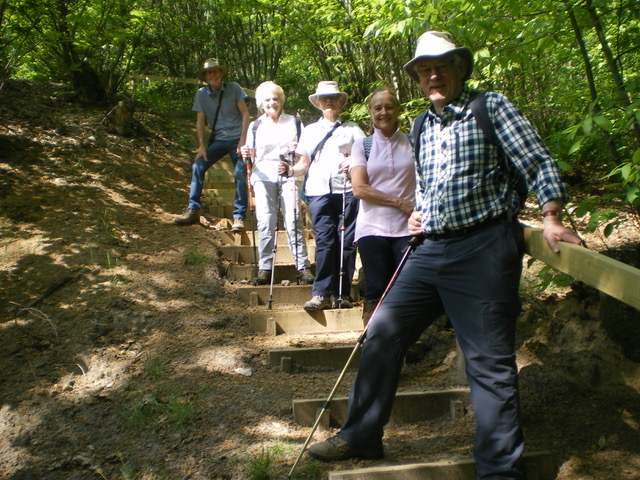
Stepping out.
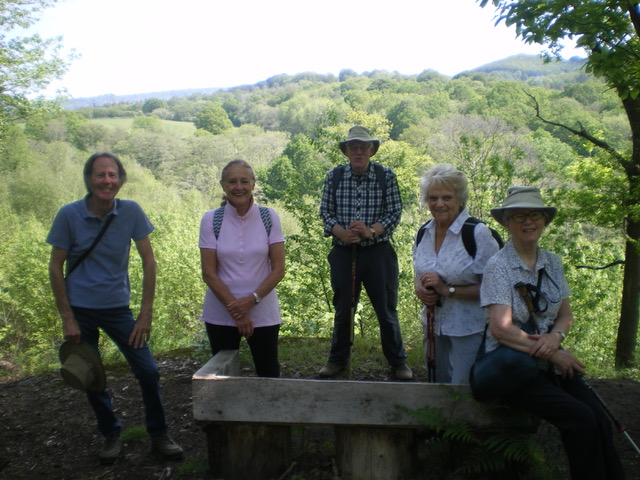
Outstanding view of Hammer Woods

Late flowering Camellia
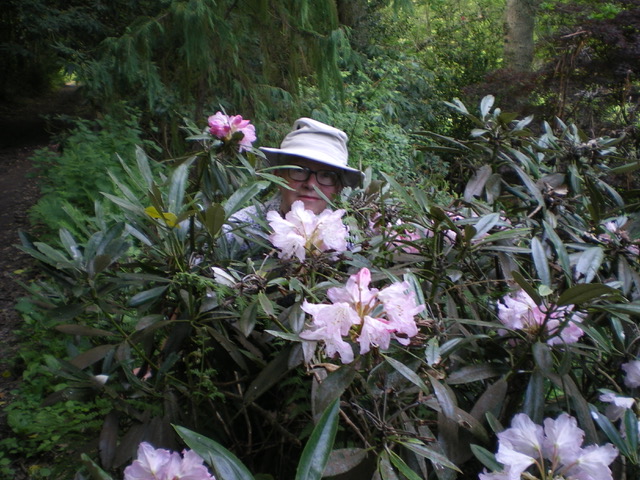
Not often seen, the very rare Marydodendron.
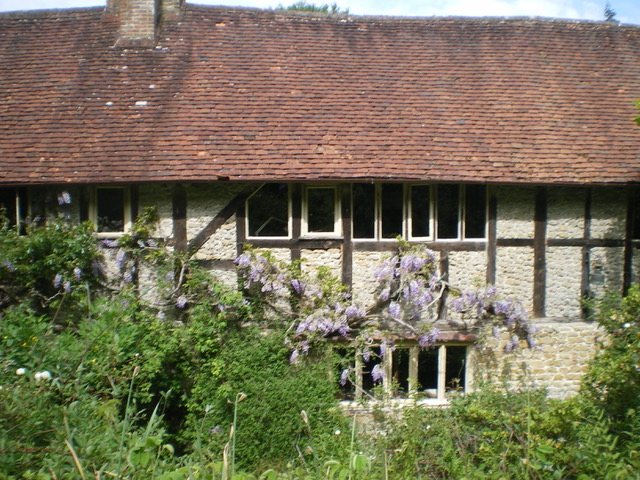
Pretty as a picture
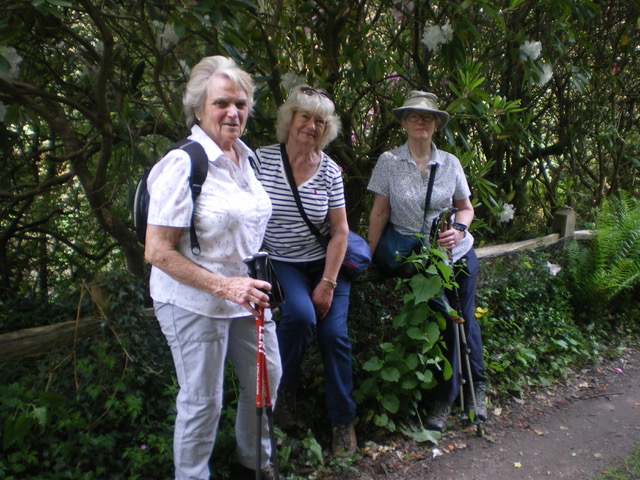
Three little maids——————

No ducks at home
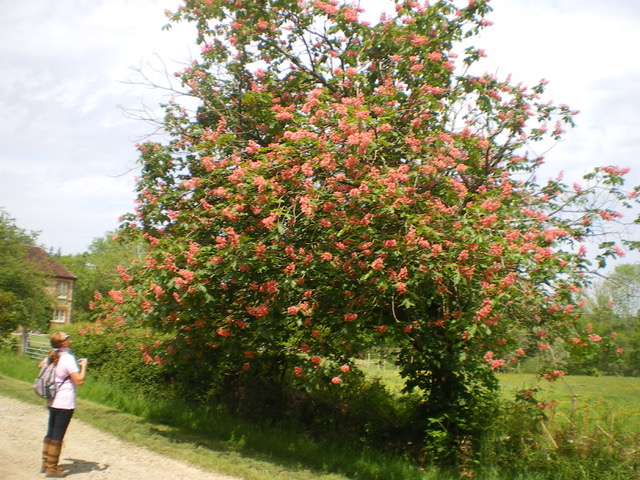
Under the spreading Chestnut tree
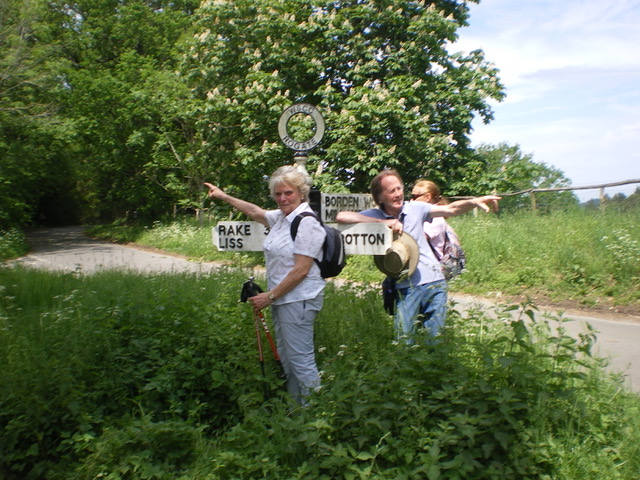
Make up your mind!
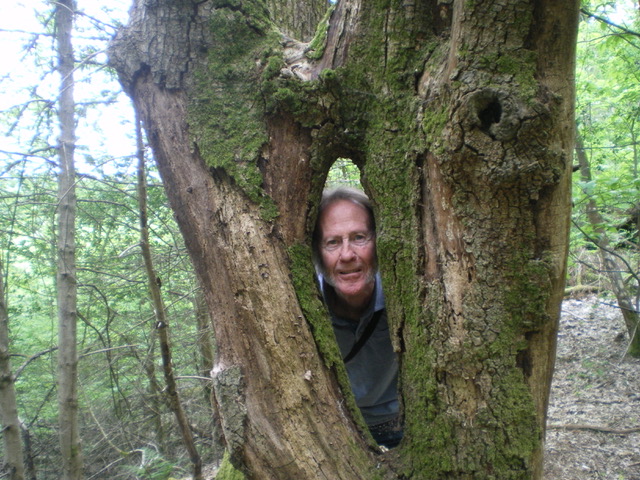
You've been framed.
Recent galleries
- Graffham walk on 16th April 2025
- Lodsworth walk on 9th April 2025
- Elsted walk 2nd April 2025
- Stedham walk on 26th March 2025
- Fittleworth walk on 19th March 2025
History
2025
2024
- December (3)
- November (5)
- October (4)
- September (4)
- August (4)
- July (4)
- June (5)
- May (5)
- April (5)
- March (5)
- February (5)
- January (4)
2023
- December (3)
- November (6)
- October (5)
- September (5)
- August (3)
- July (4)
- June (6)
- May (5)
- April (4)
- March (5)
- February (4)
- January (4)
2022
- December (4)
- November (5)
- October (5)
- September (3)
- August (4)
- July (6)
- June (11)
- May (4)
- April (5)
- March (4)
- February (5)
- January (4)
2021
2020
- December (4)
- November (1)
- October (5)
- September (4)
- August (3)
- July (3)
- March (2)
- February (5)
- January (3)
2019
- December (2)
- November (5)
- October (4)
- September (3)
- August (4)
- July (4)
- June (11)
- May (5)
- April (4)
- March (3)
- February (5)
- January (5)
2018
- December (2)
- November (4)
- October (4)
- September (5)
- August (4)
- July (3)
- June (5)
- May (8)
- April (4)
- March (4)
- February (5)
- January (3)
2017
- December (3)
- November (5)
- October (3)
- September (4)
- August (4)
- July (4)
- June (11)
- May (4)
- April (4)
- March (3)
- February (4)
- January (5)
2016
- December (3)
- November (4)
- October (5)
- September (4)
- August (3)
- July (6)
- June (11)
- May (4)
- April (5)
- March (3)
- February (10)
- January (2)
2015
2014
- June (2)
1997
- February (1)